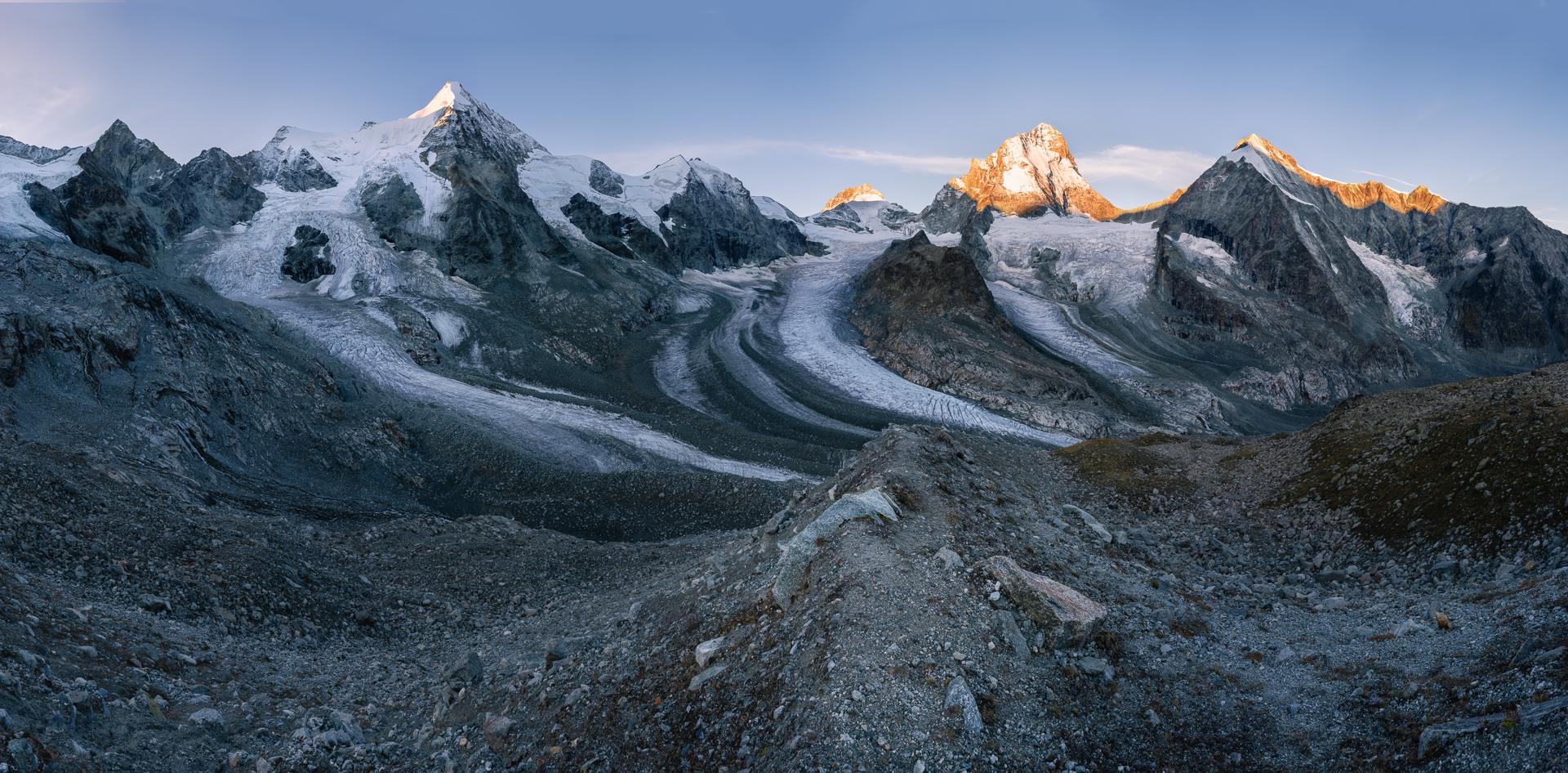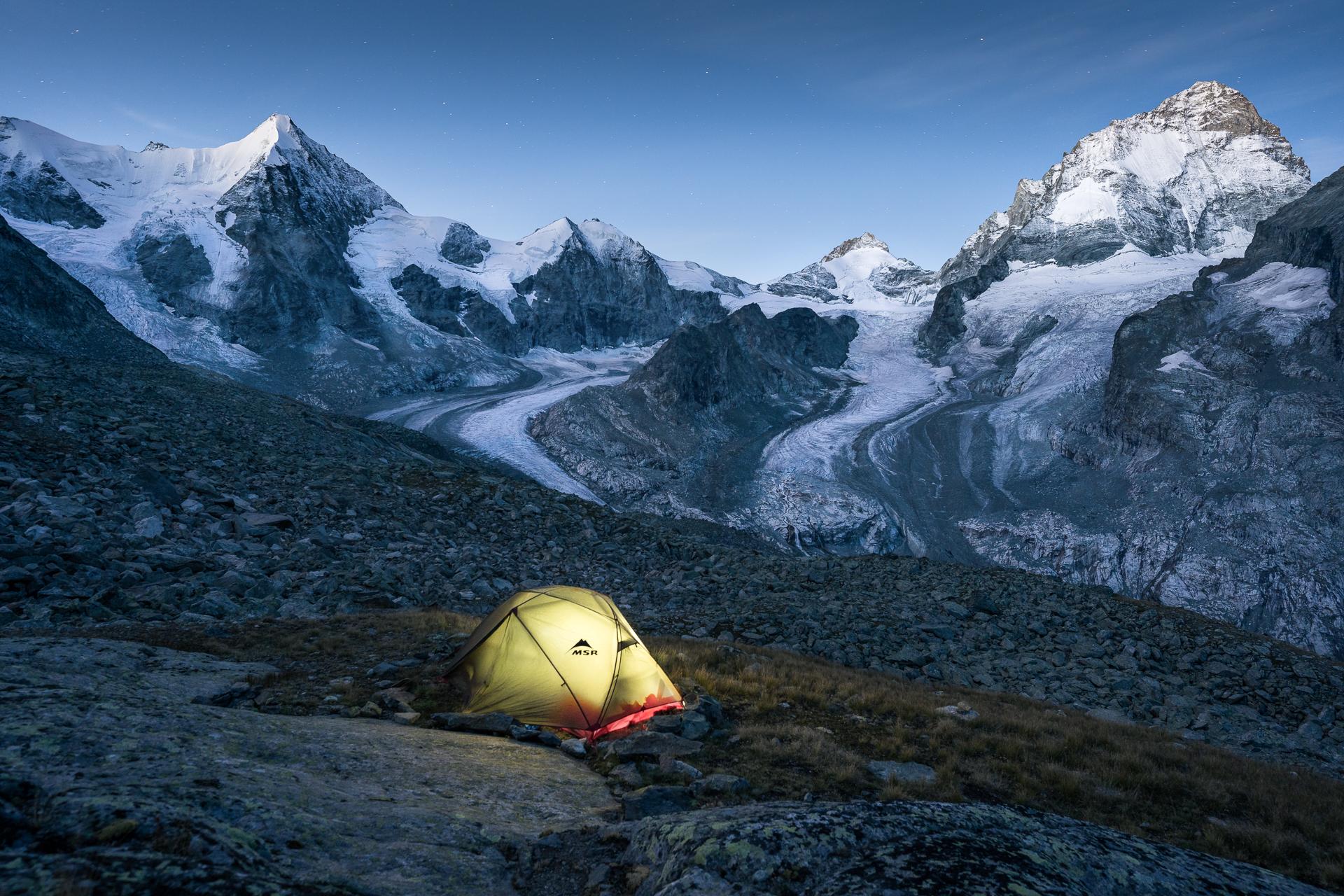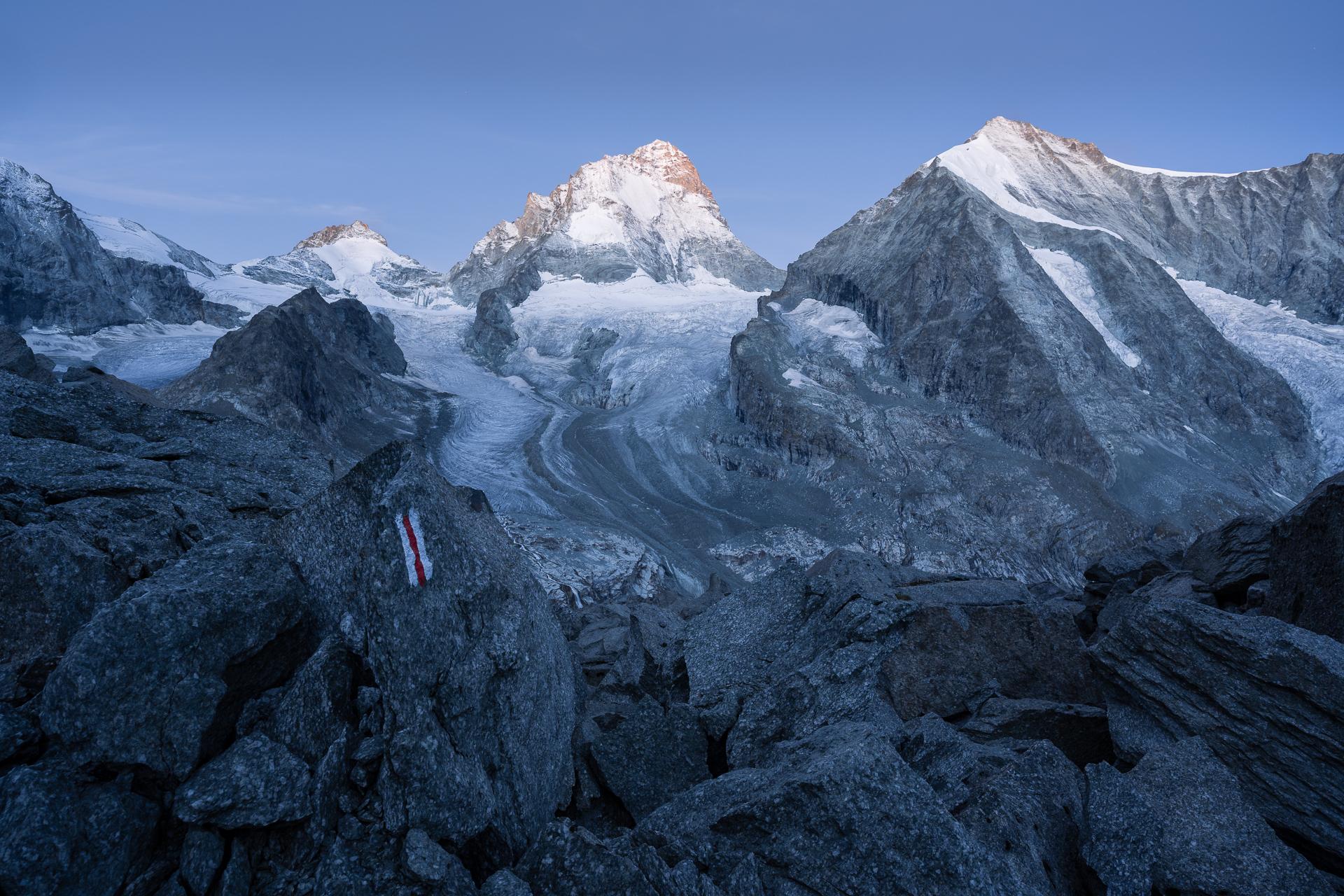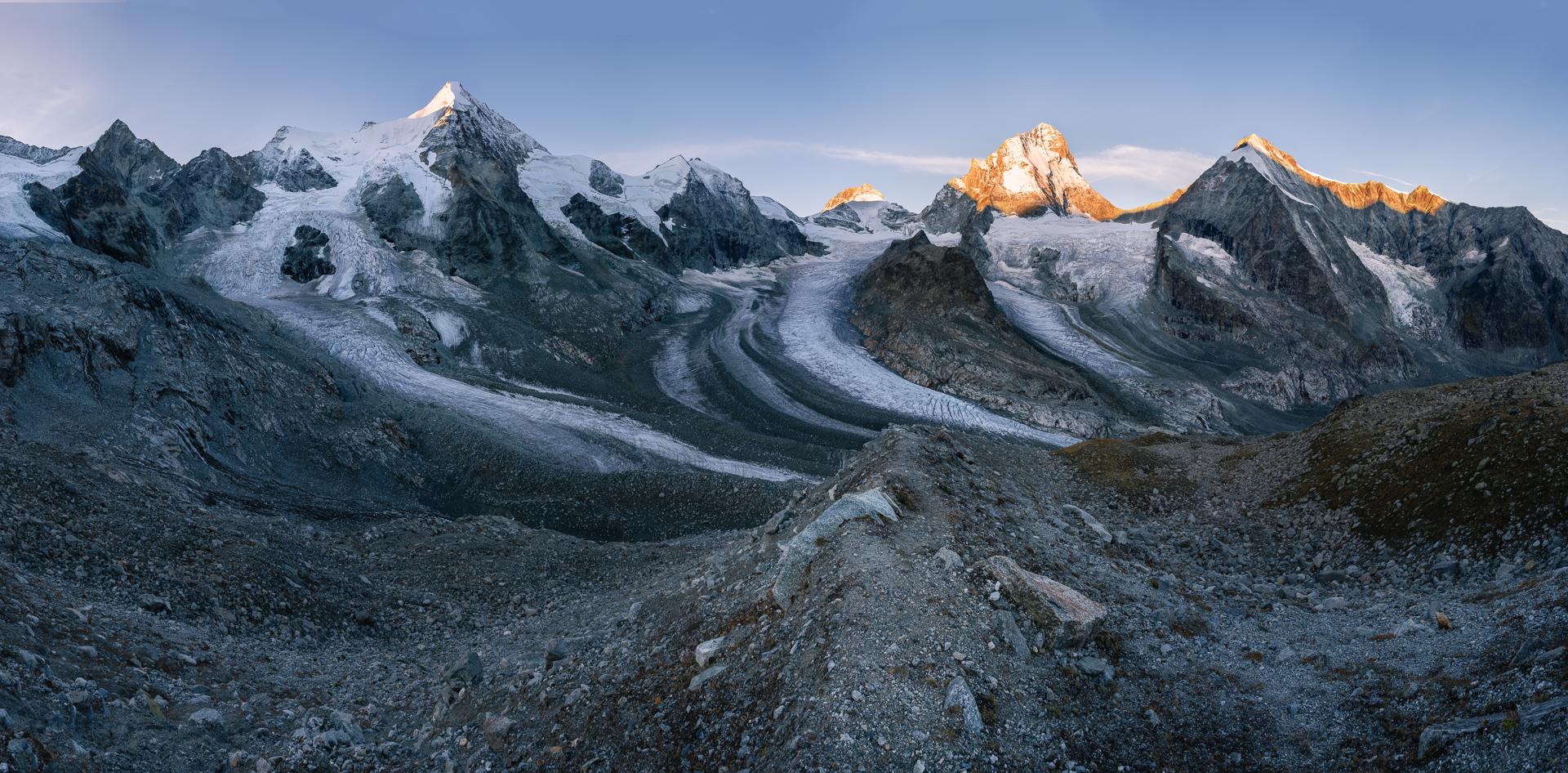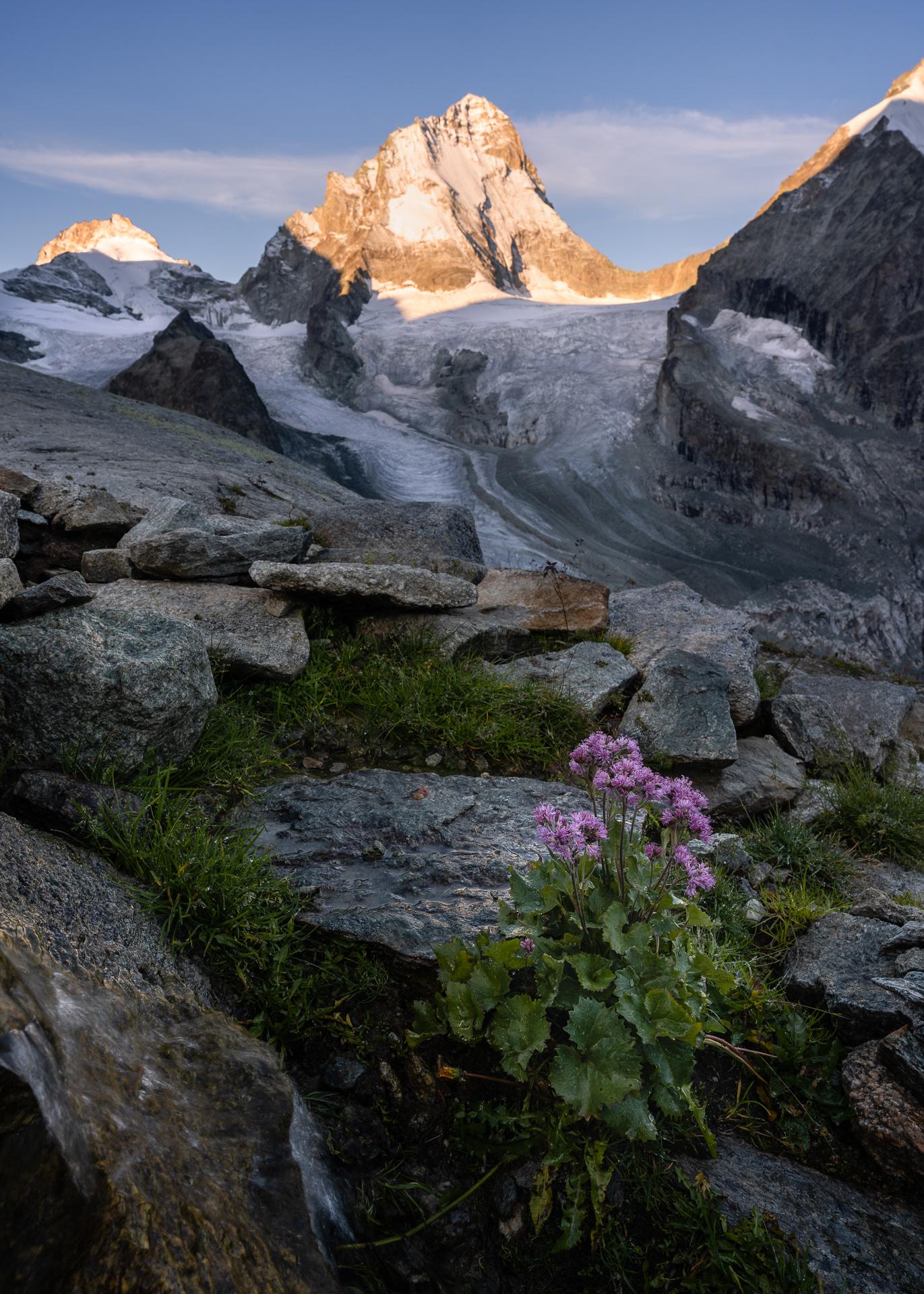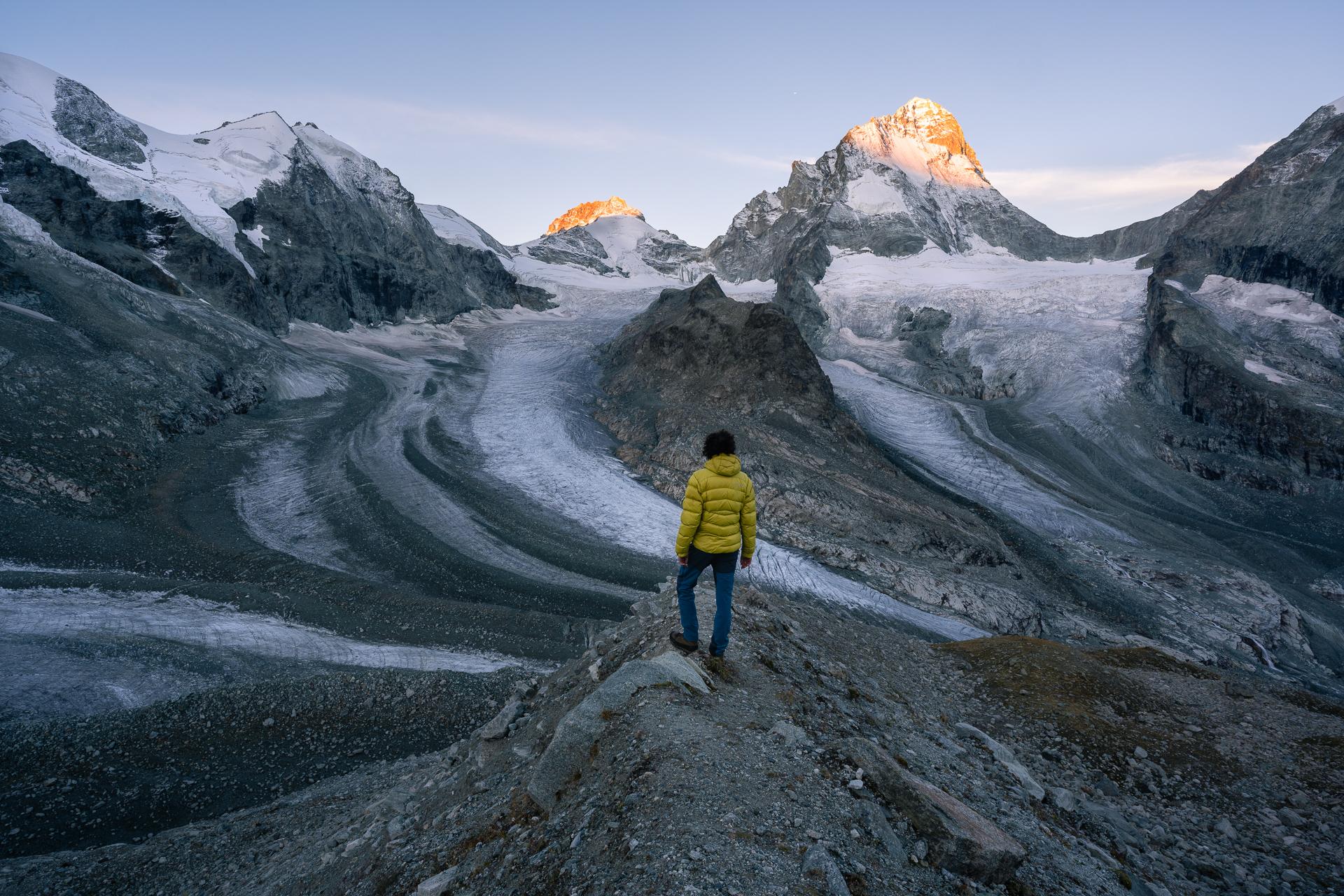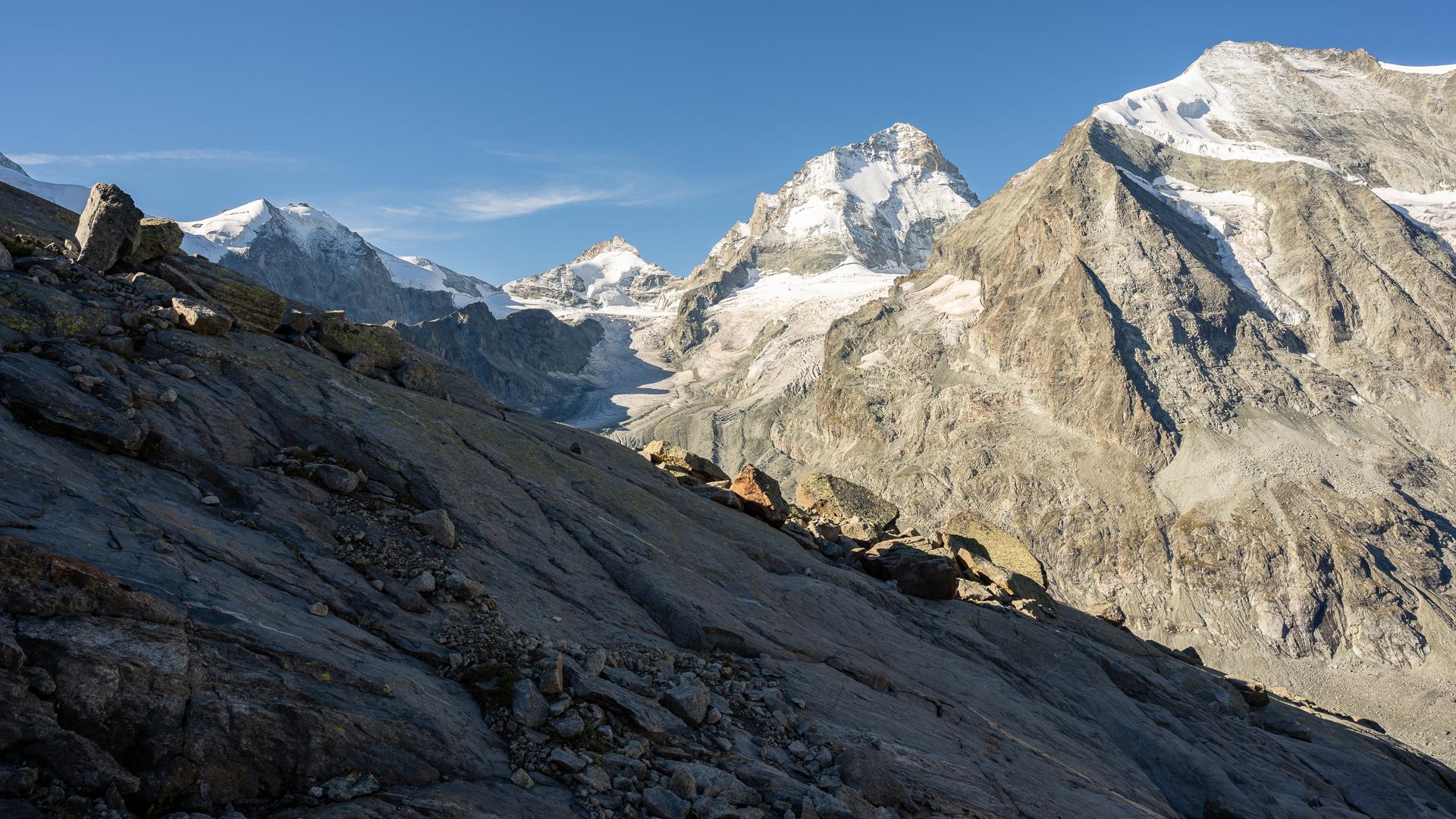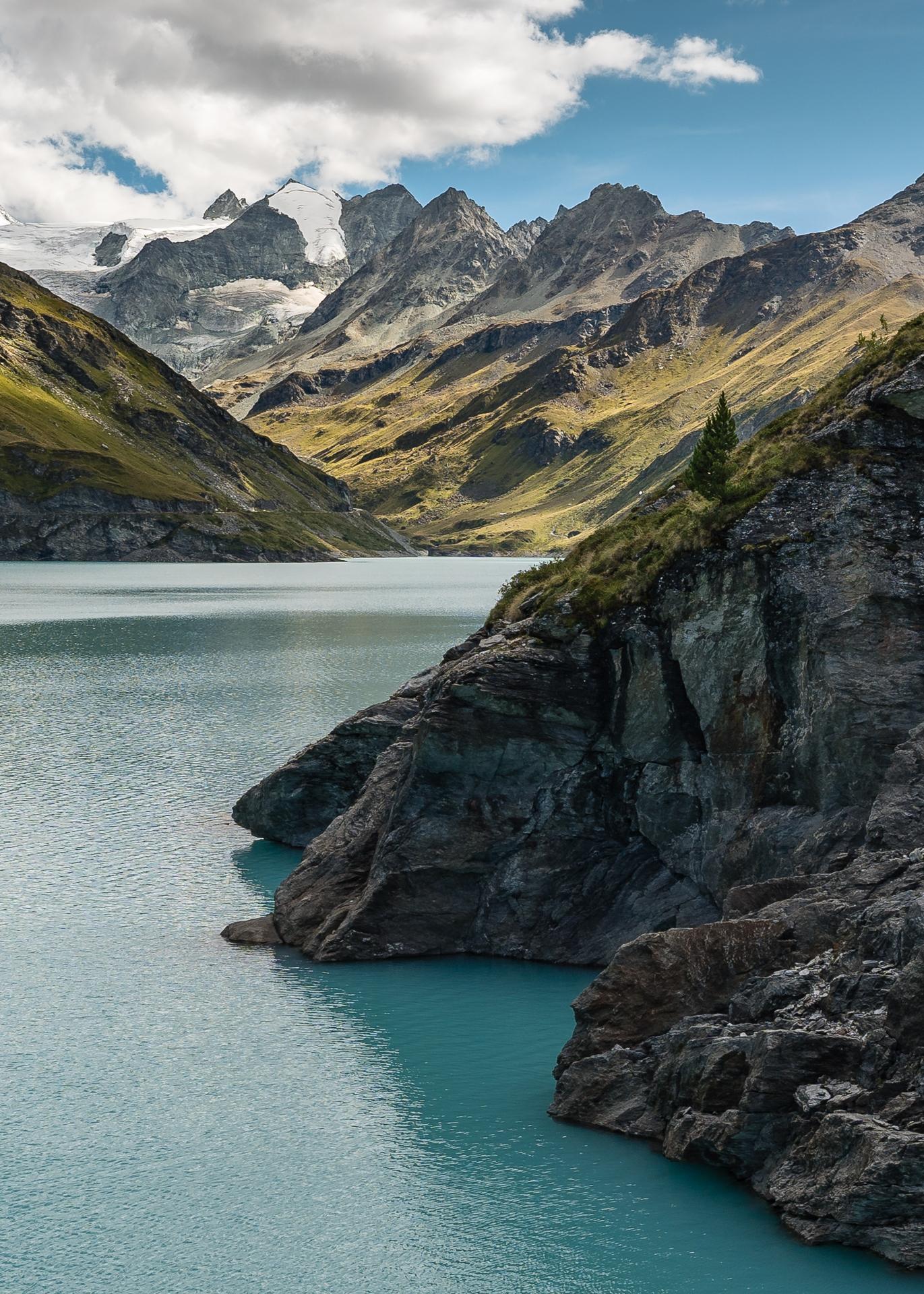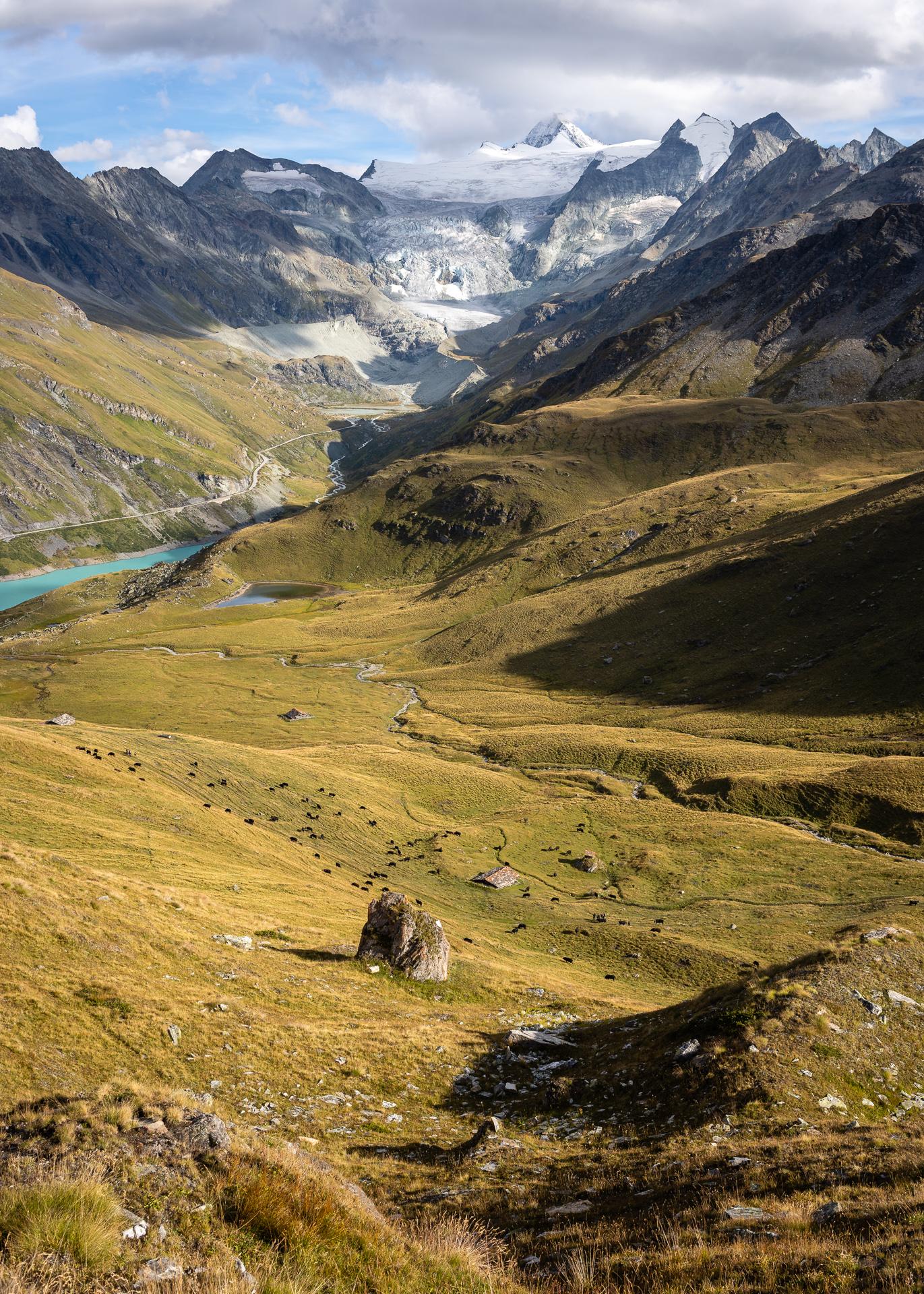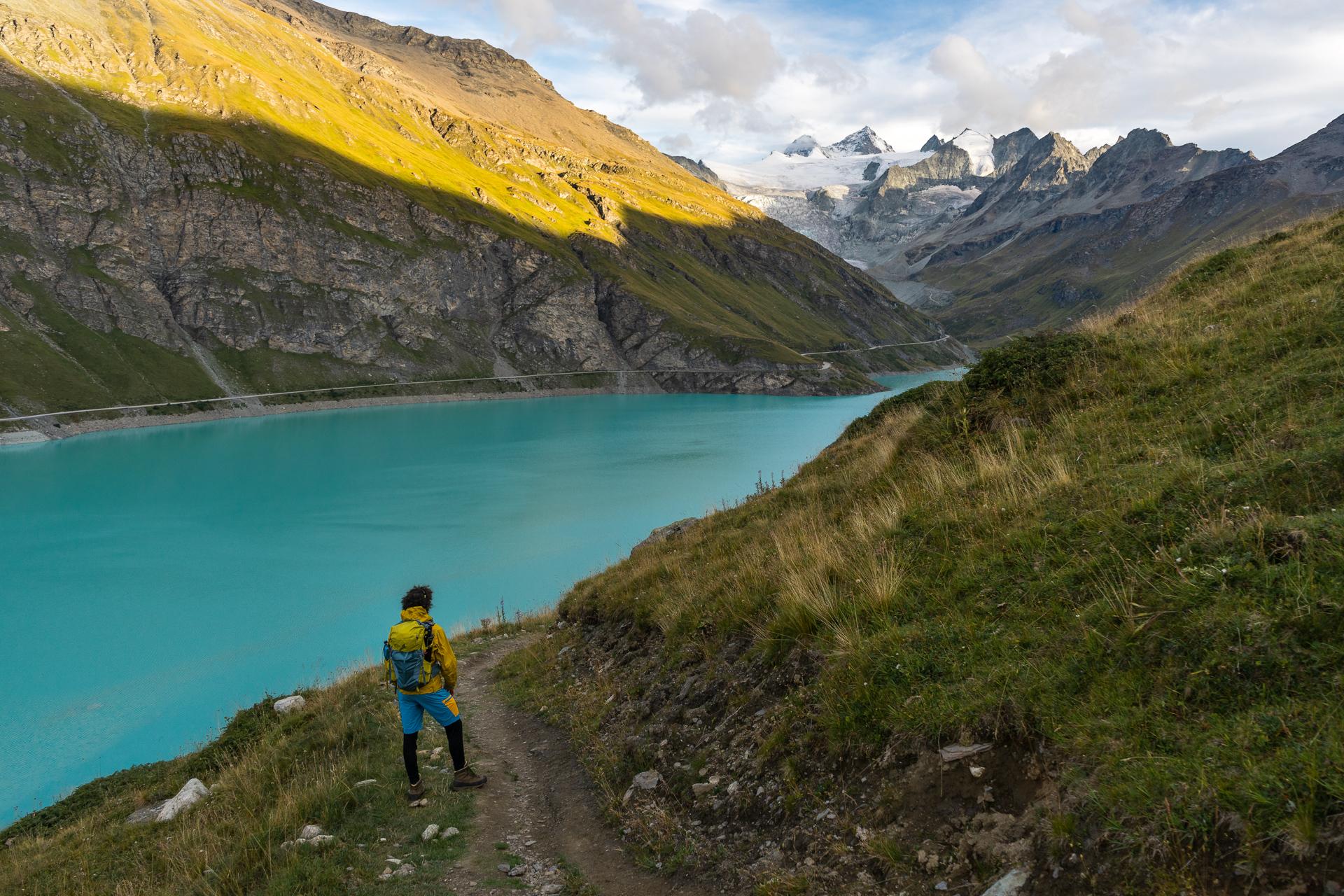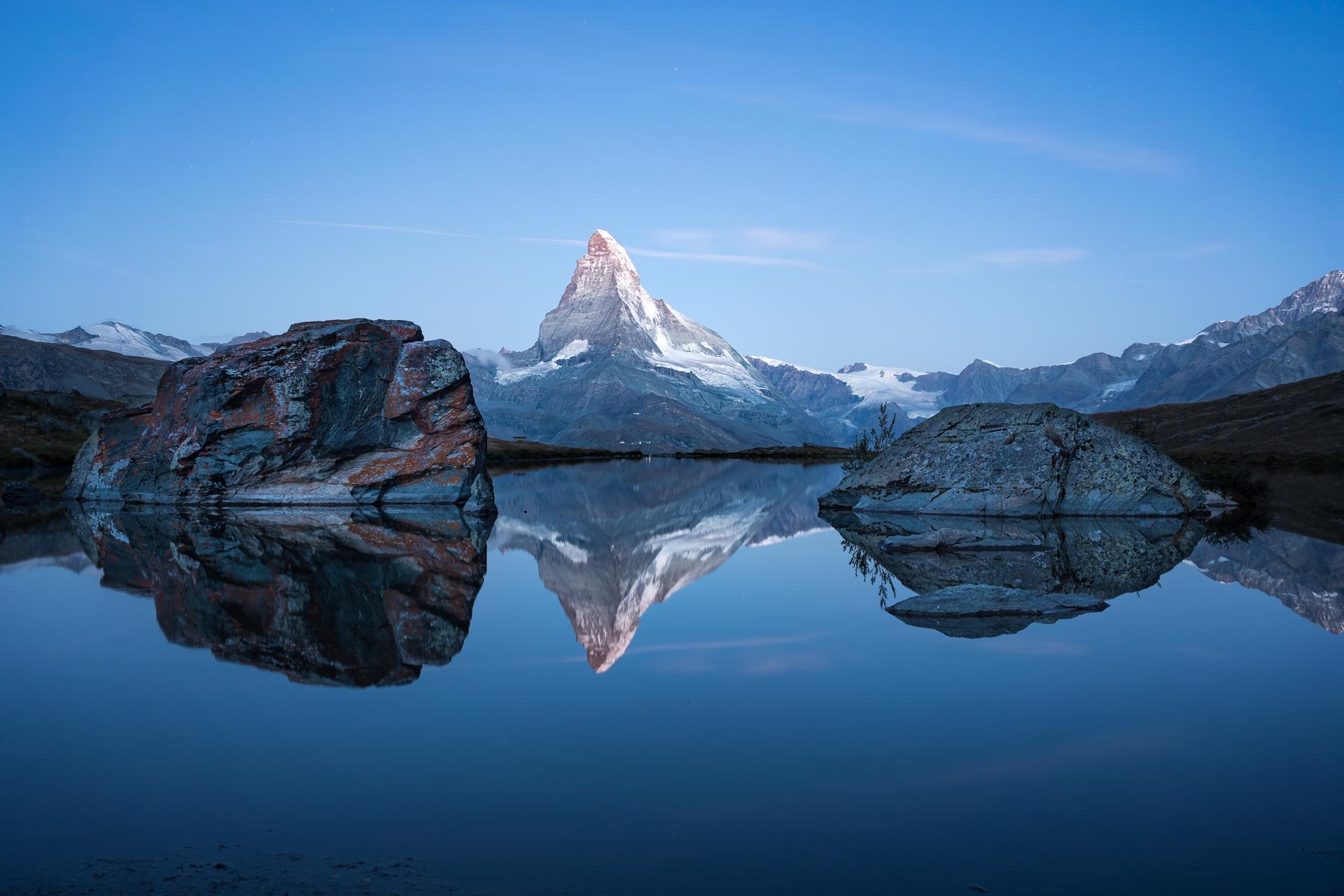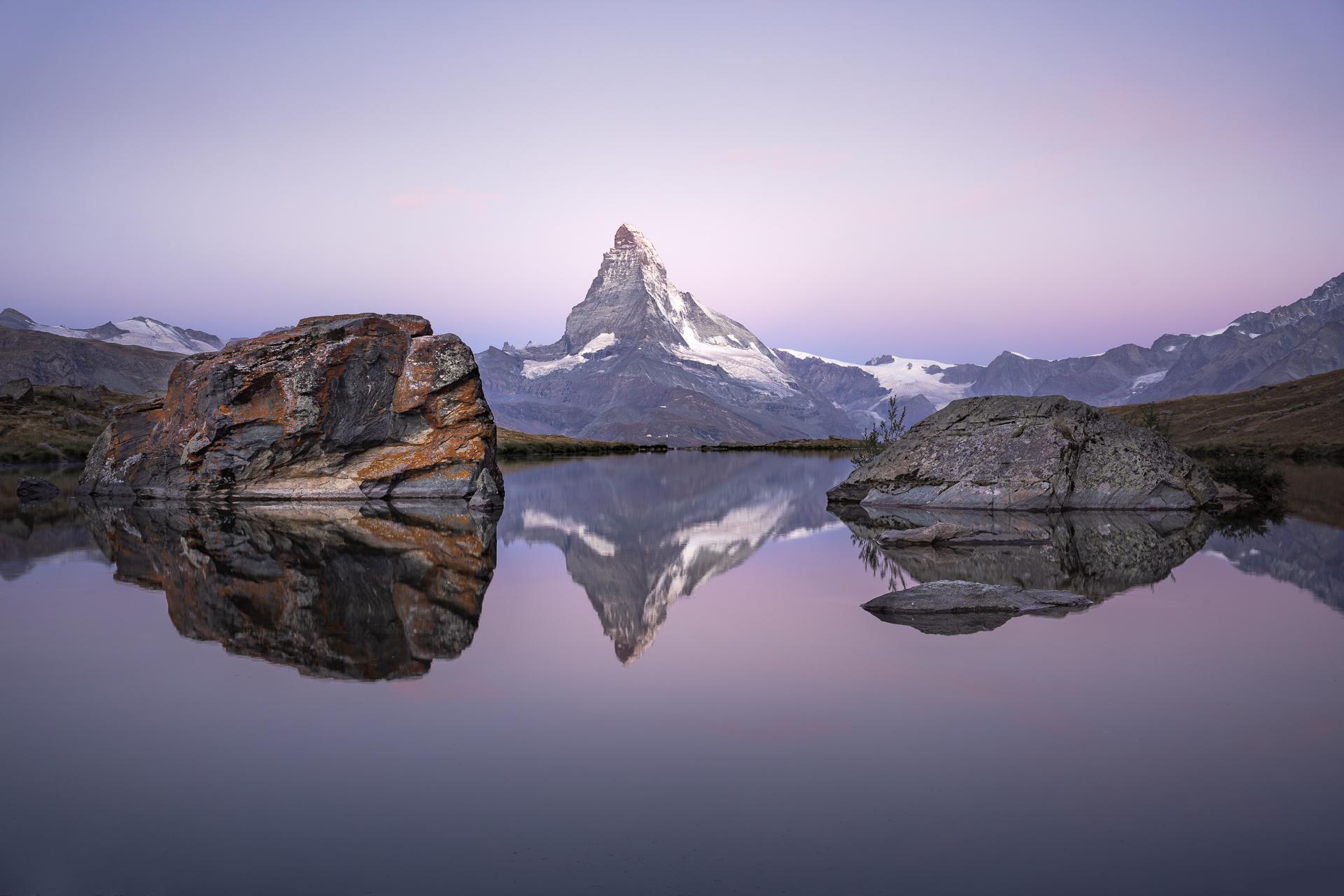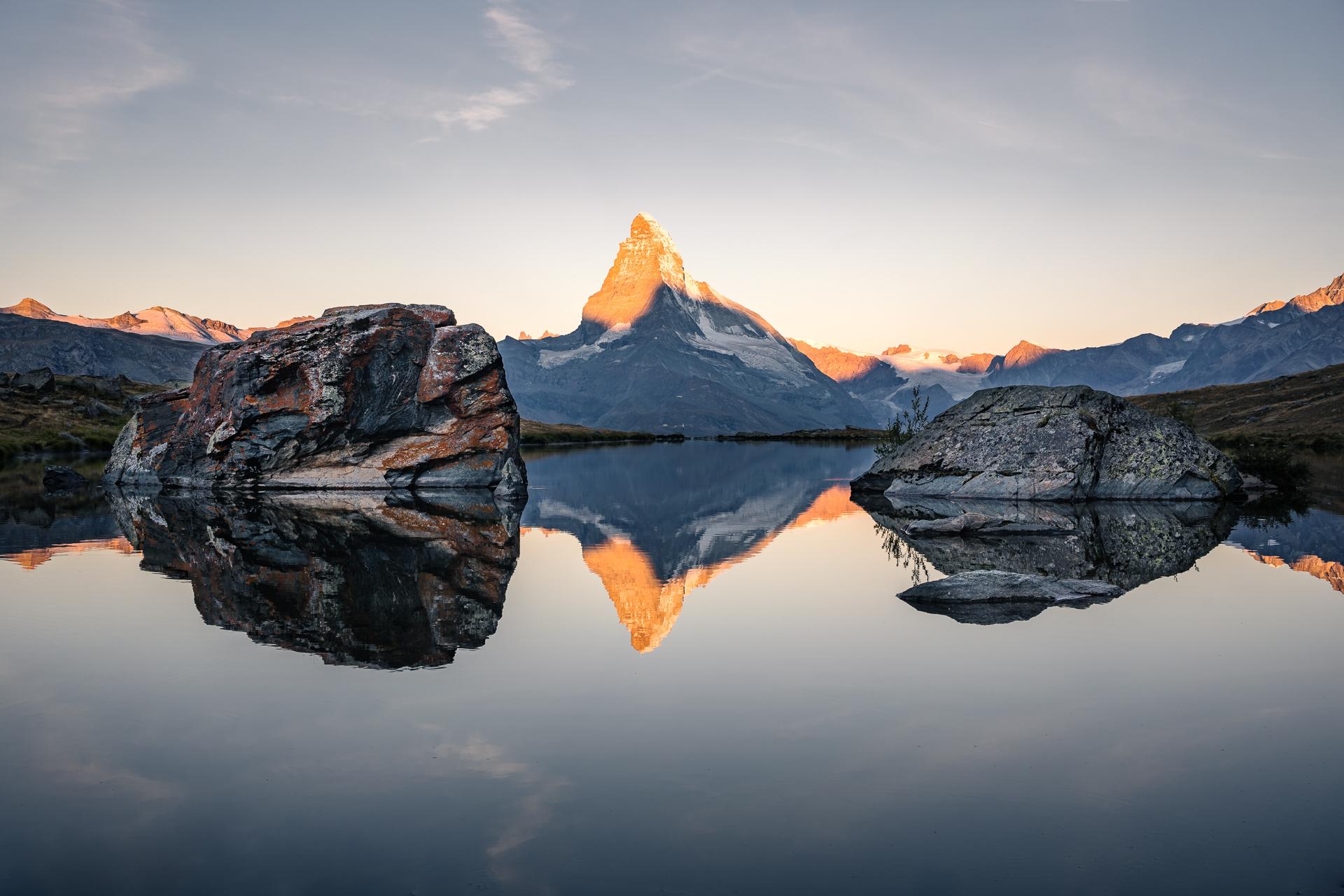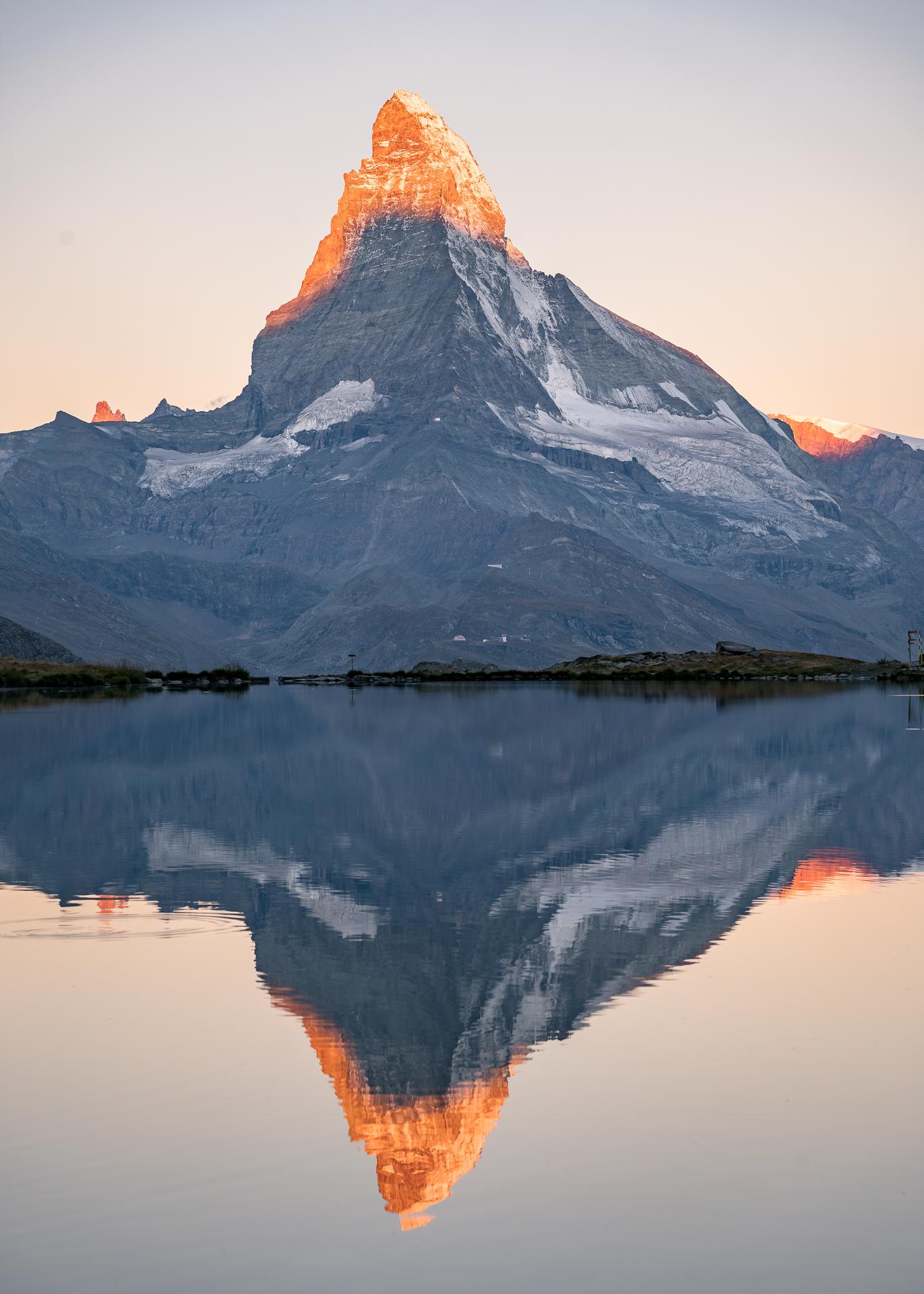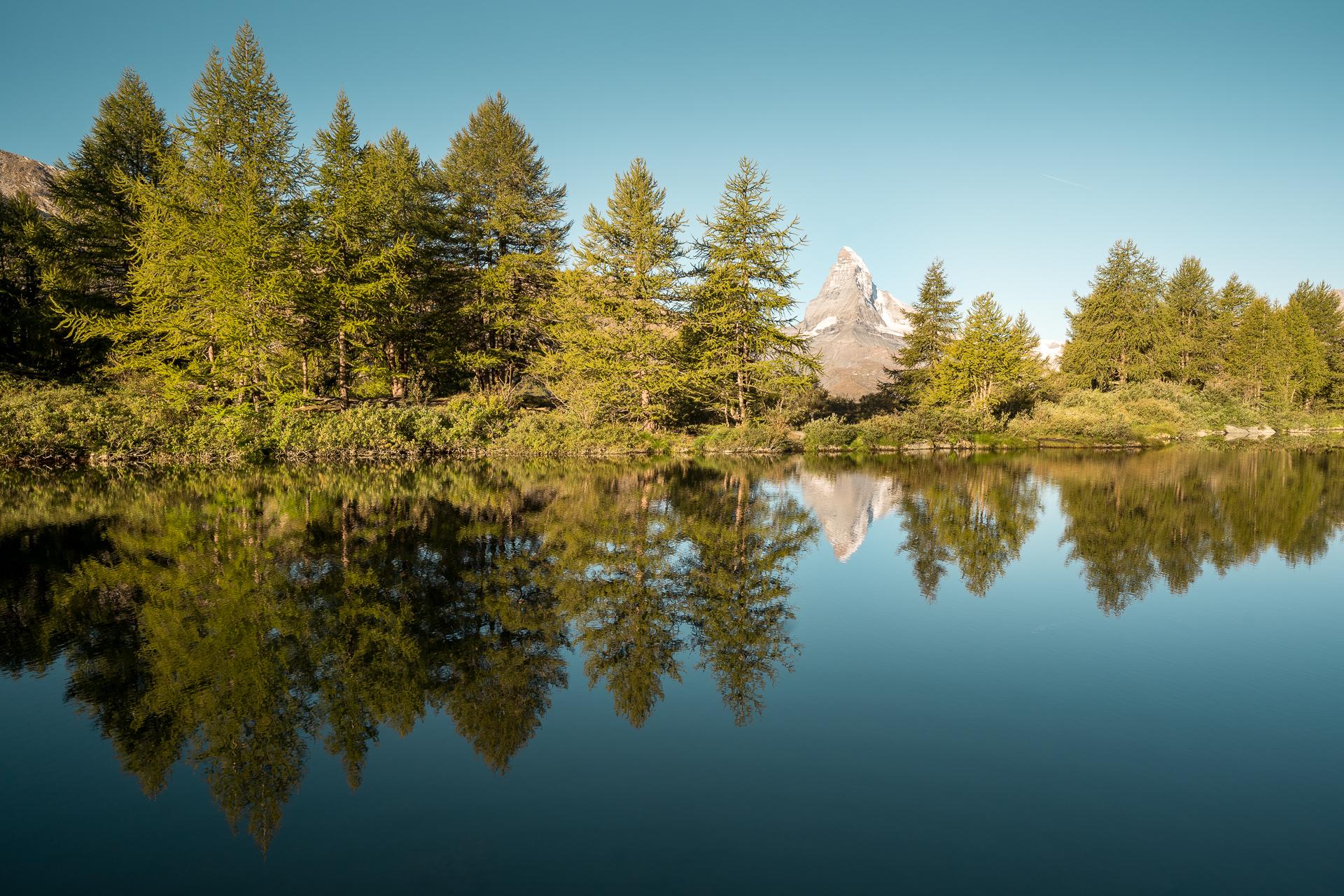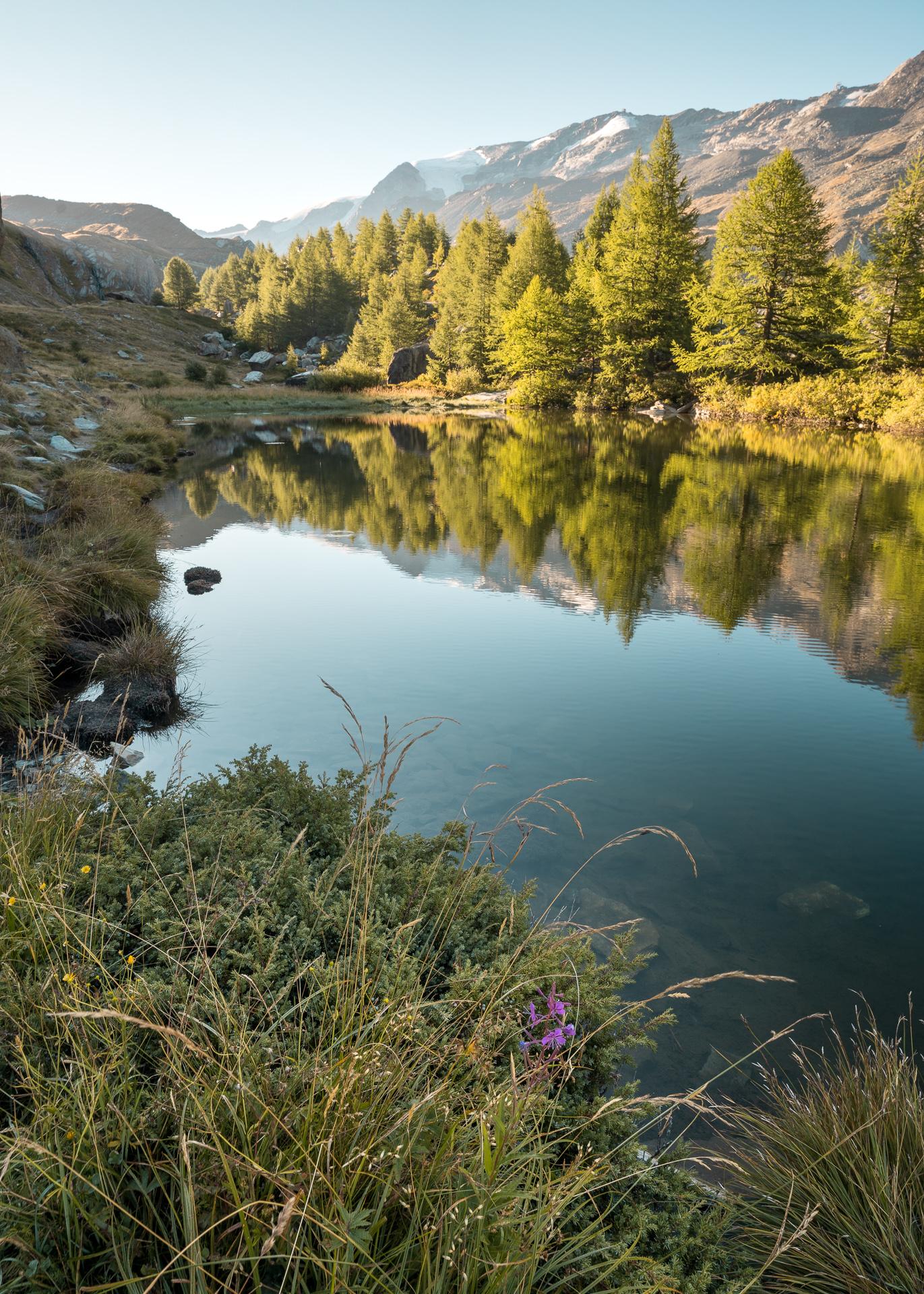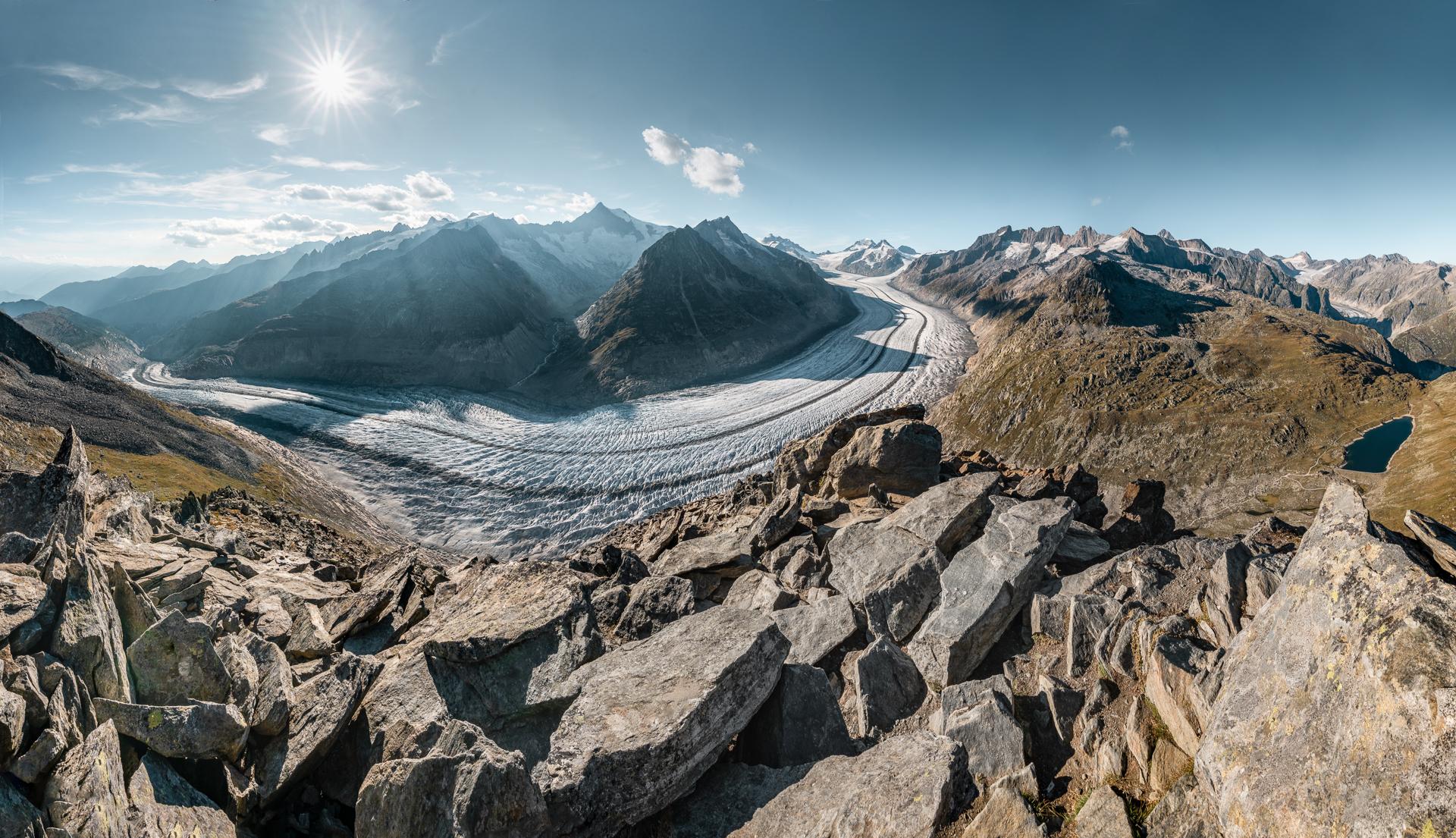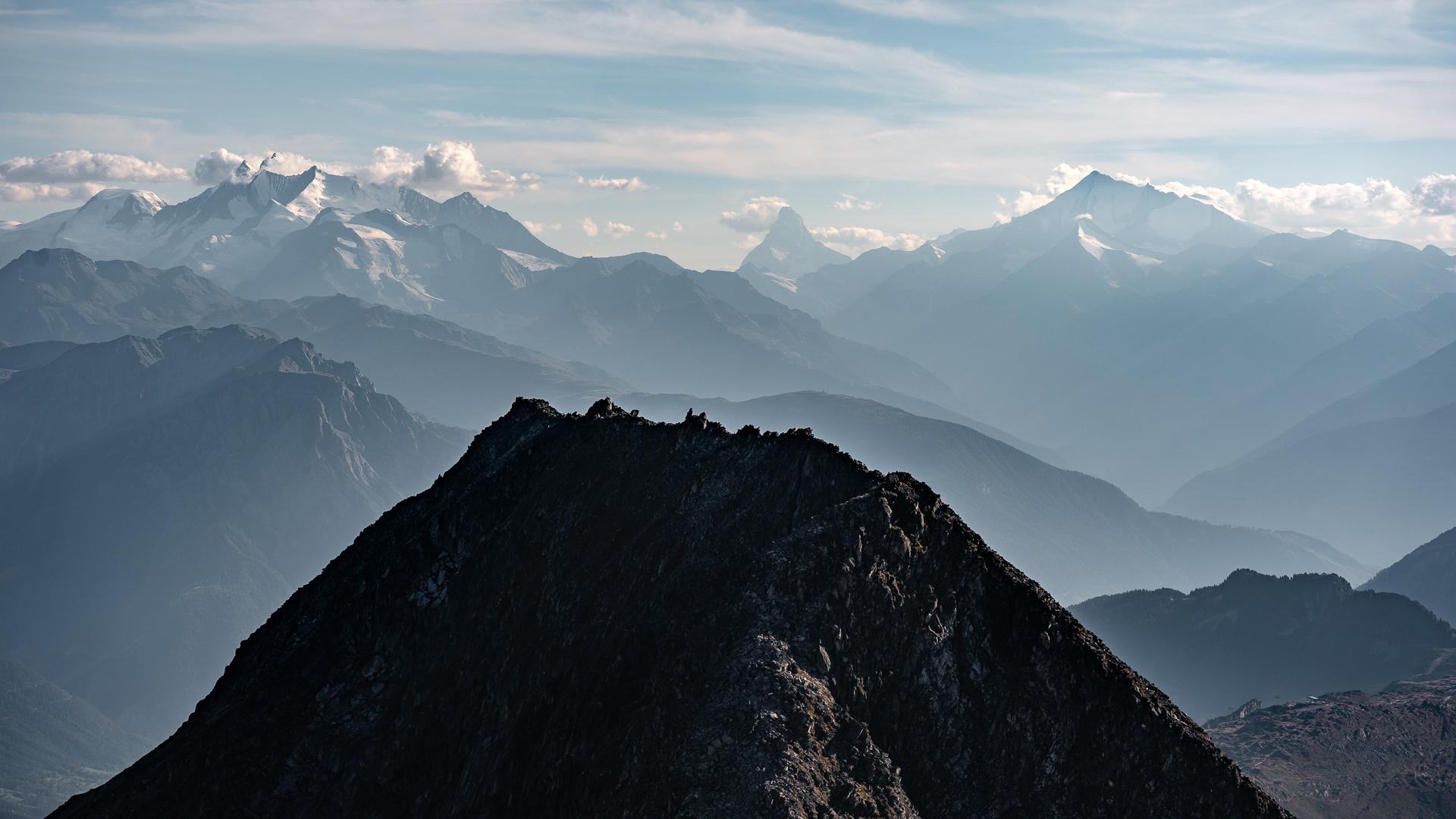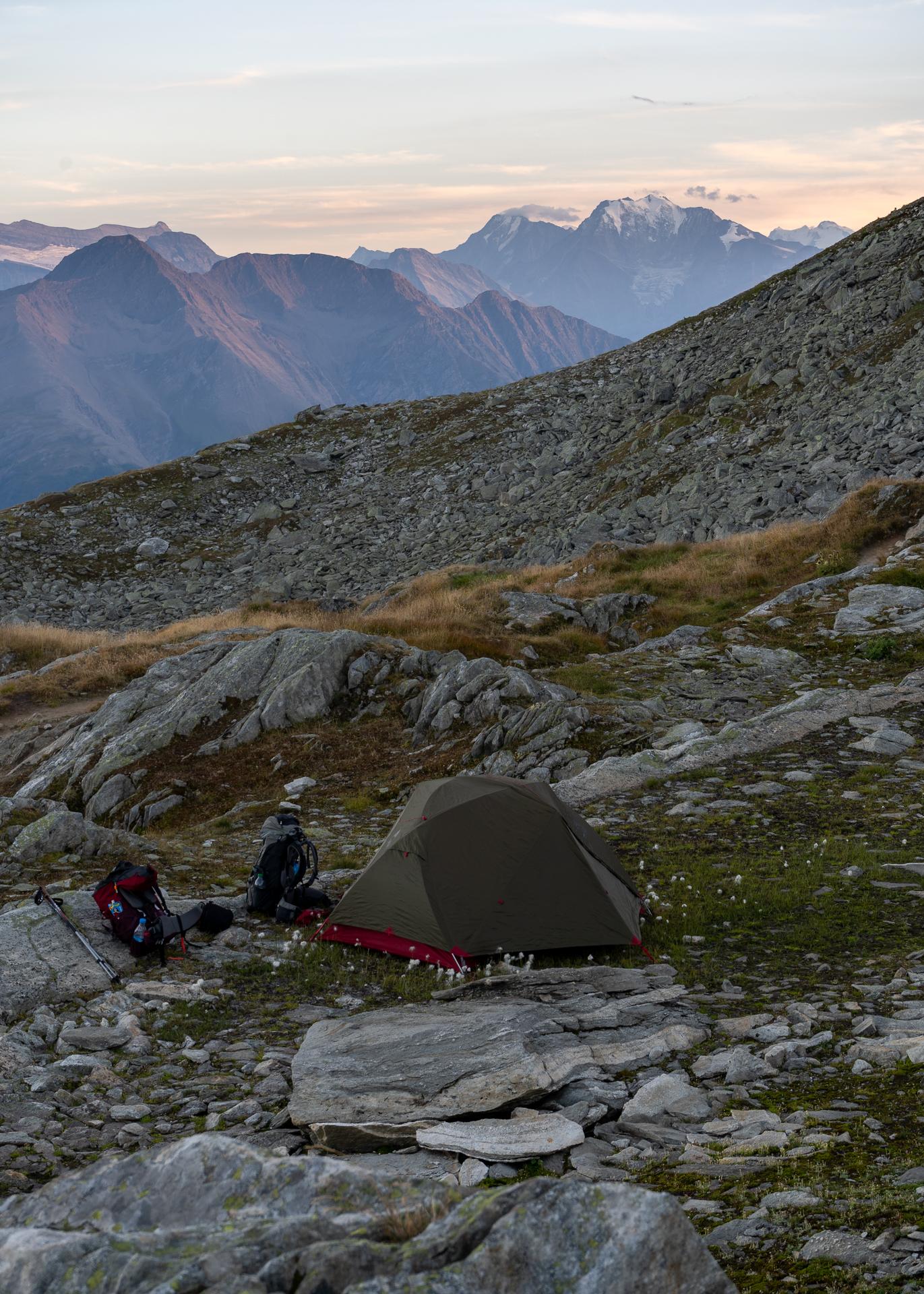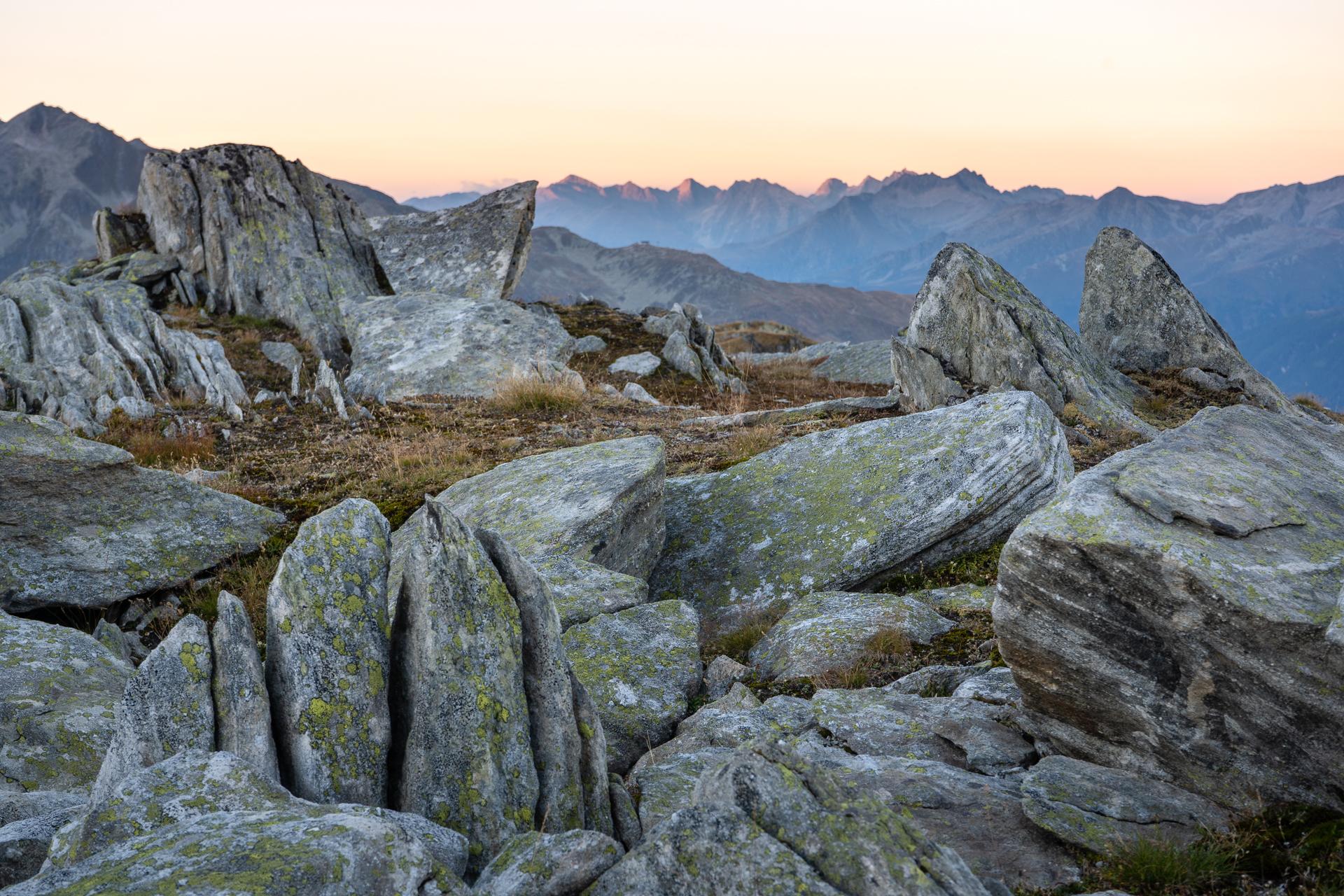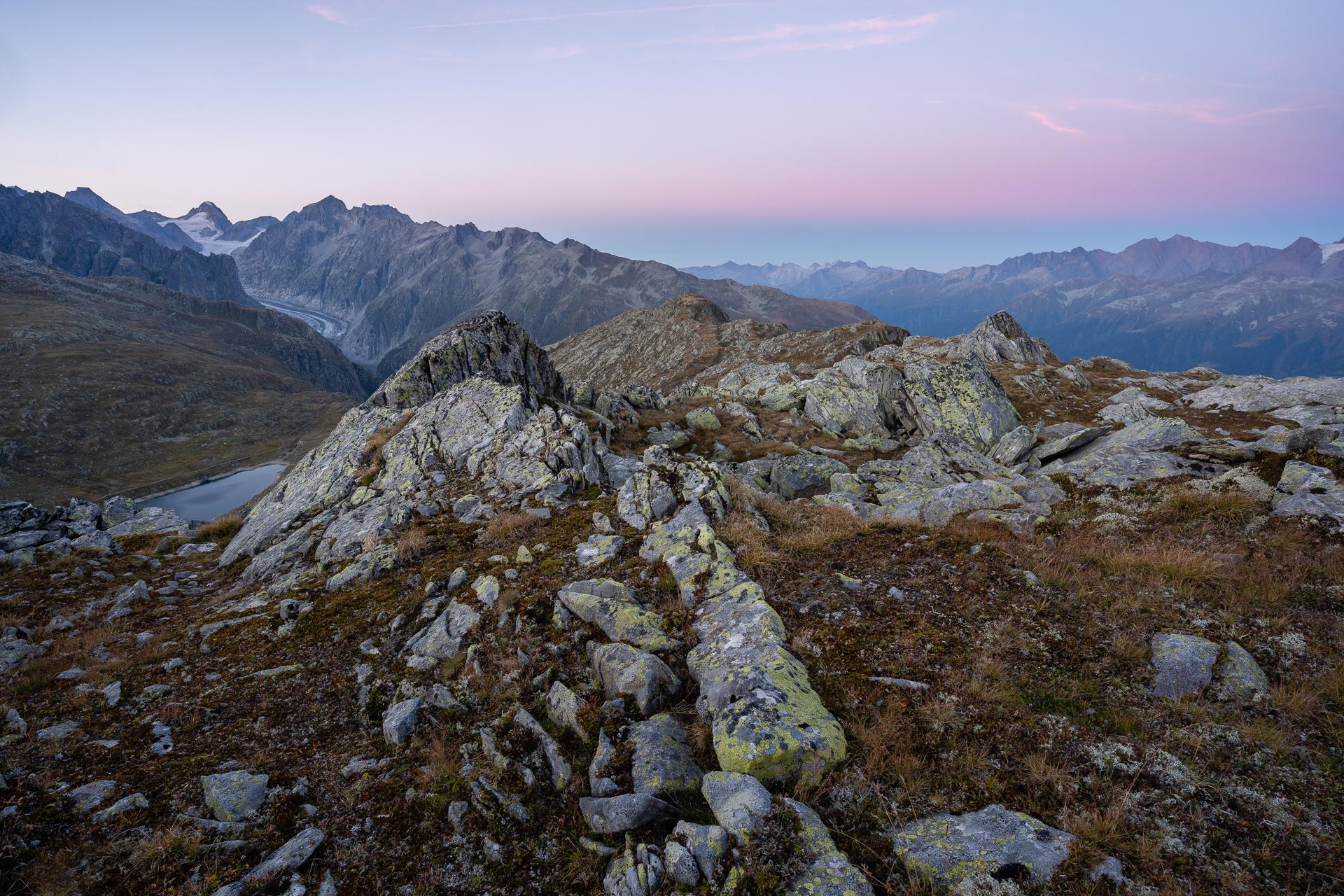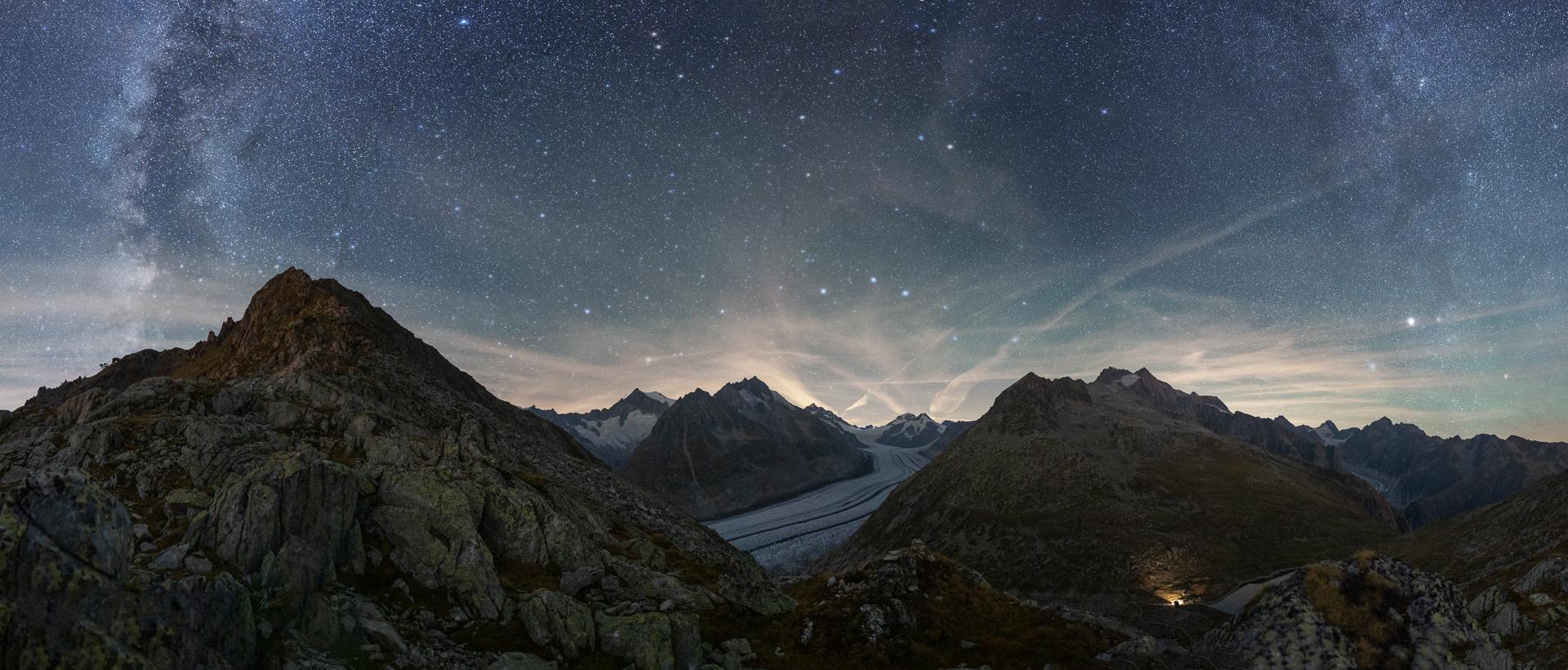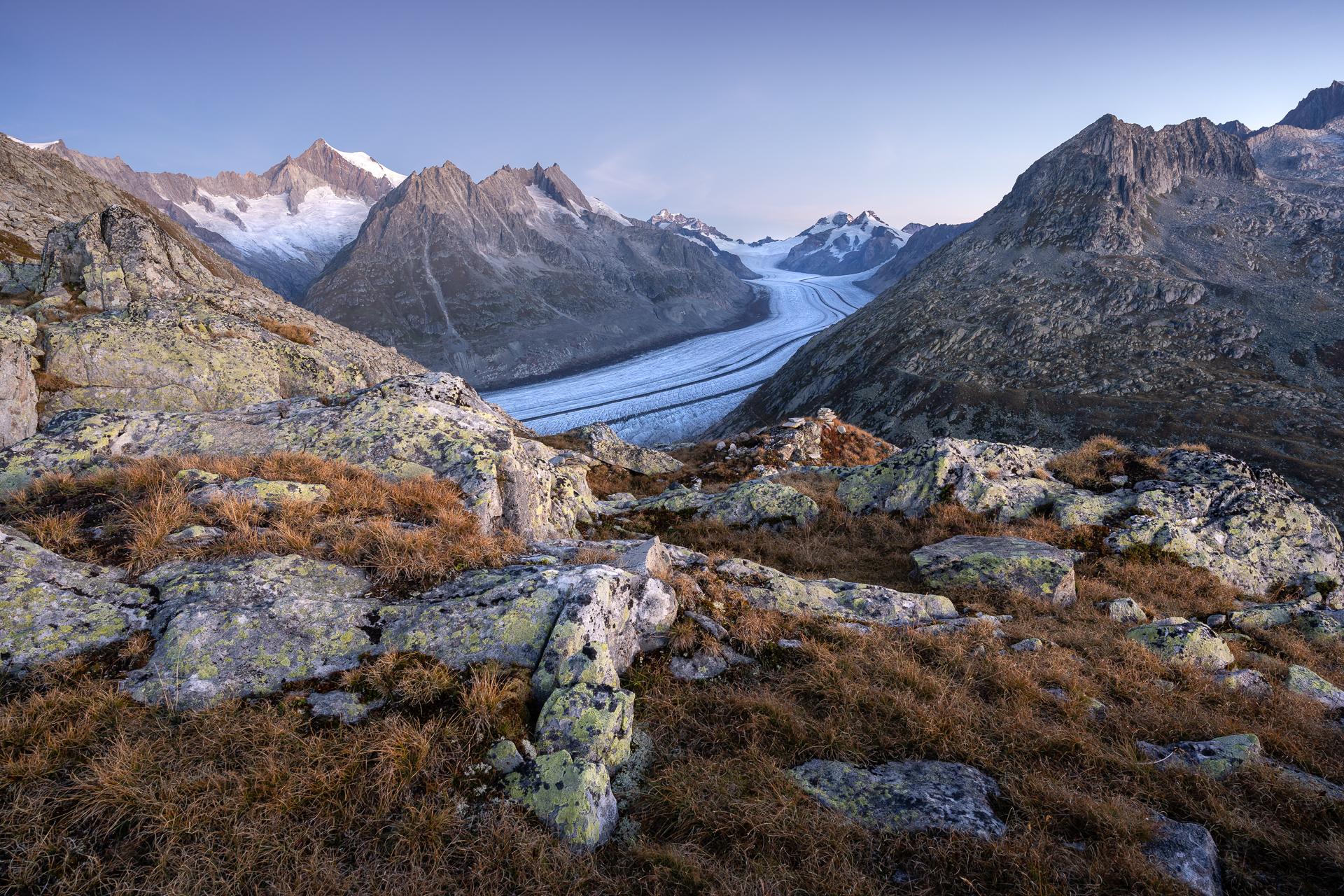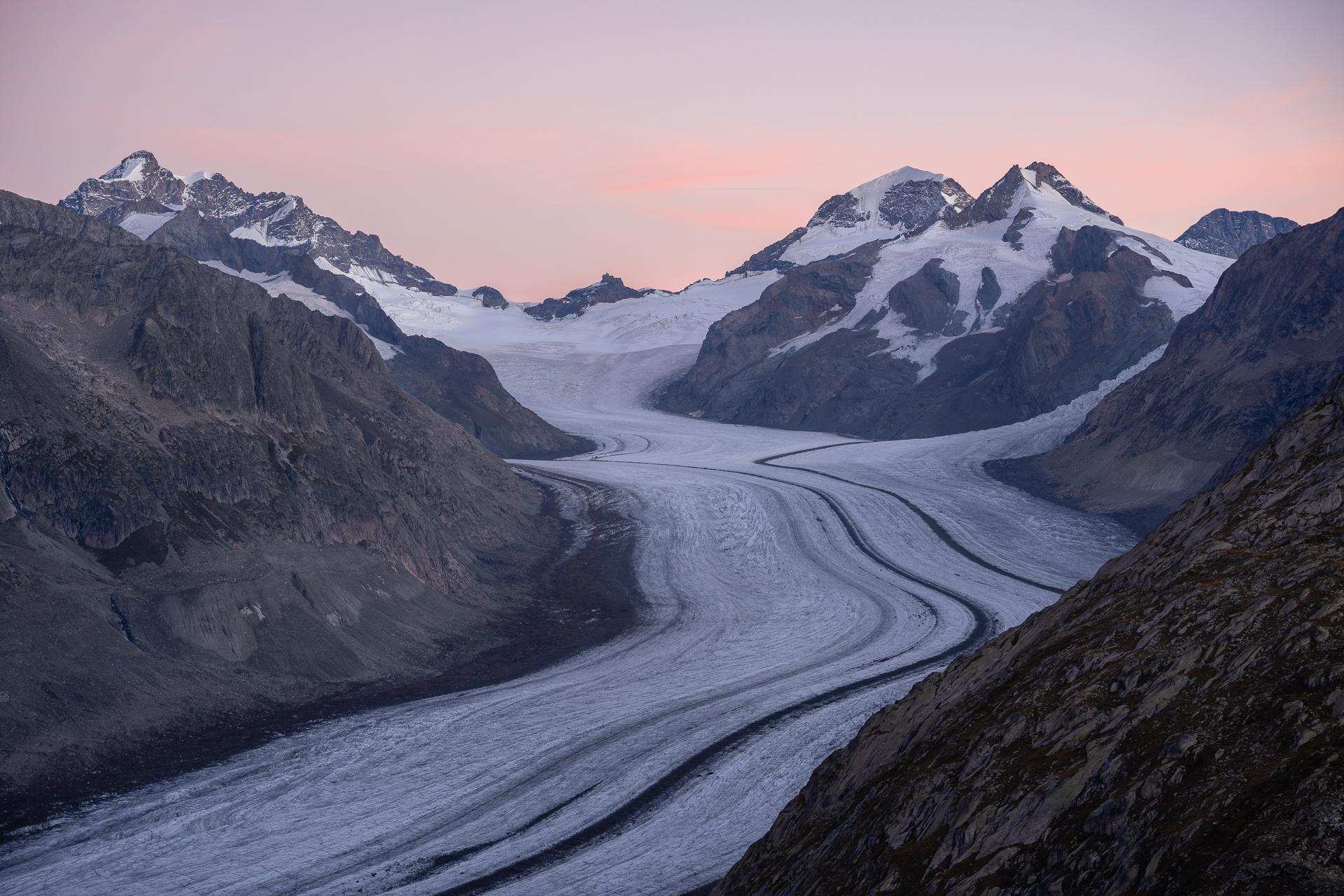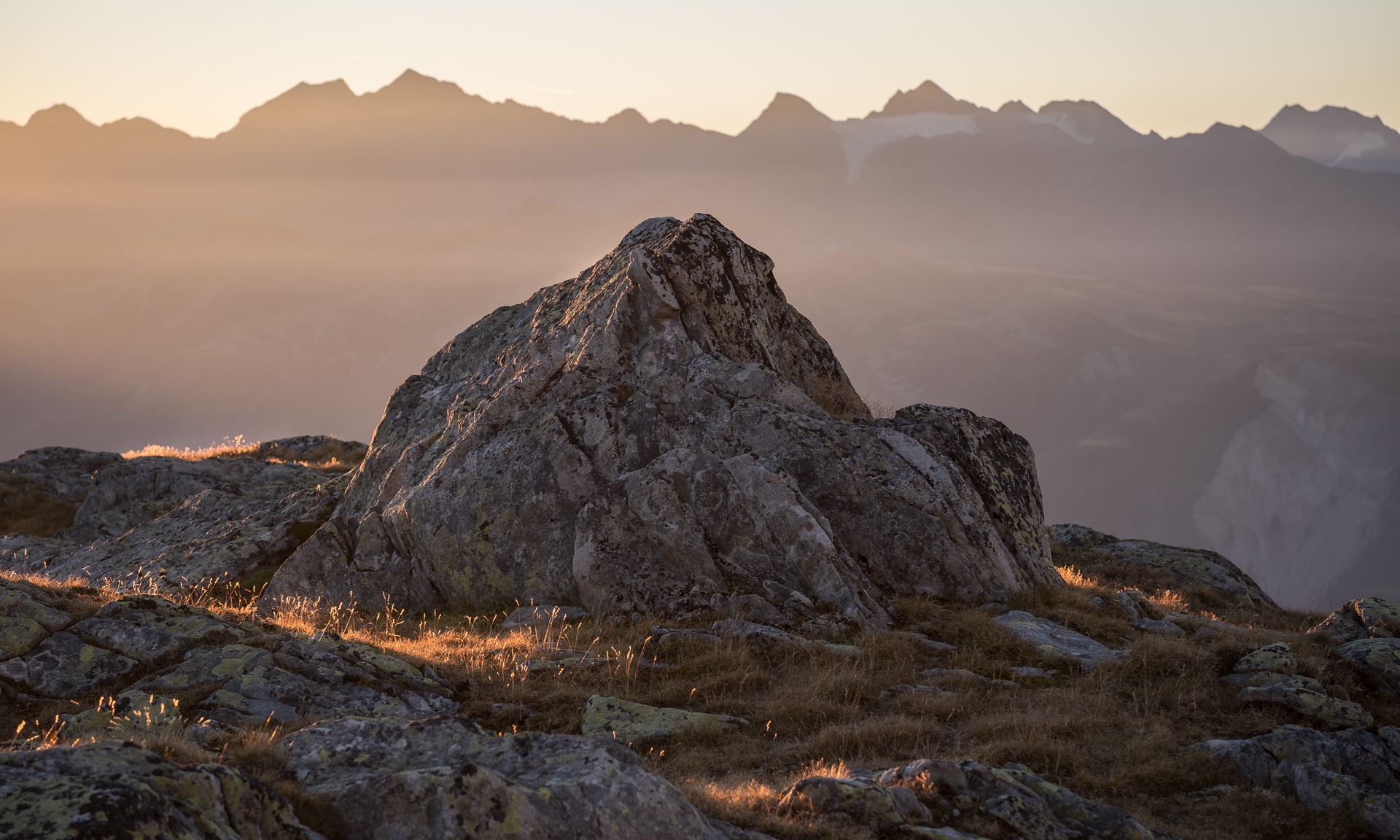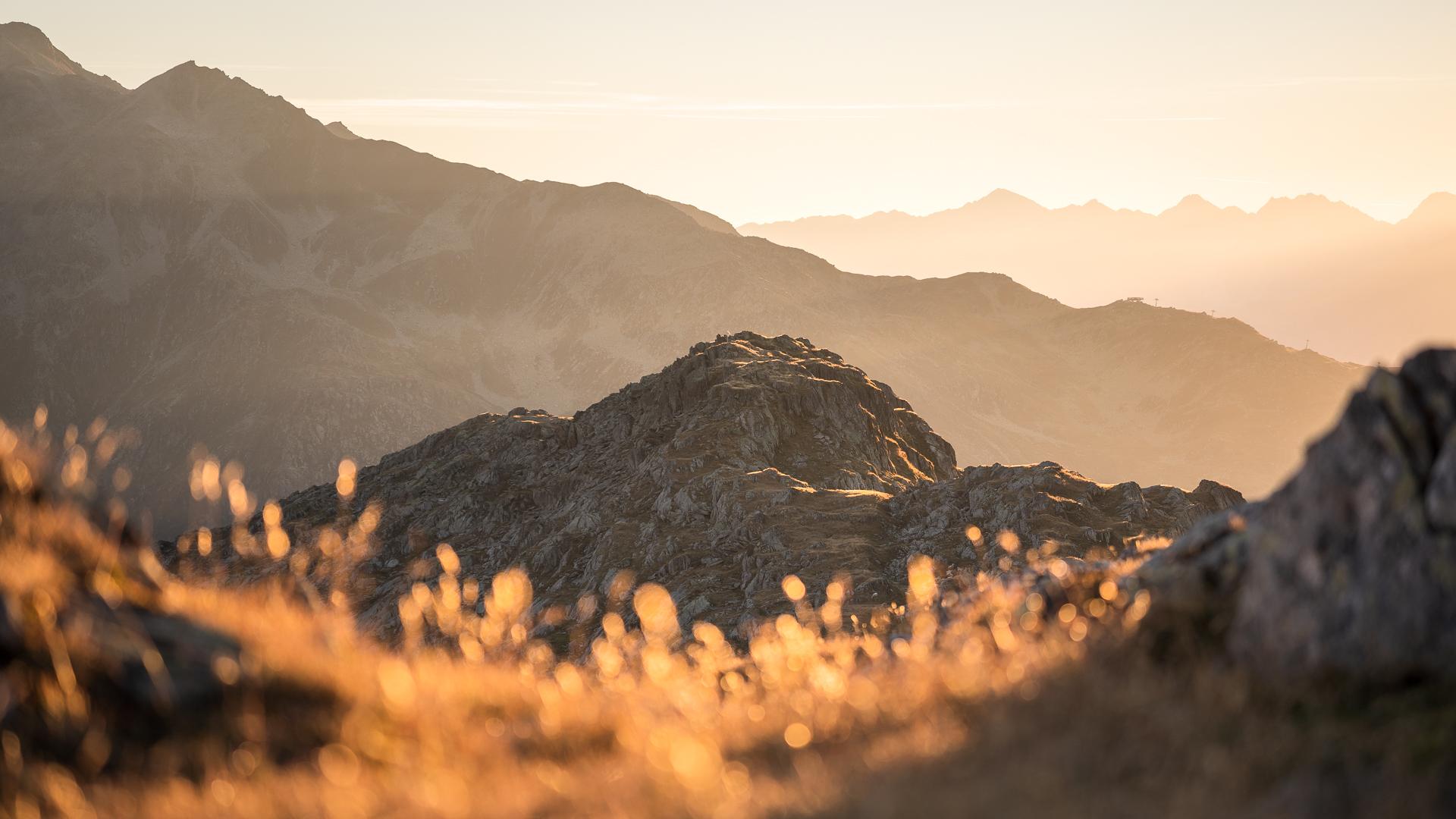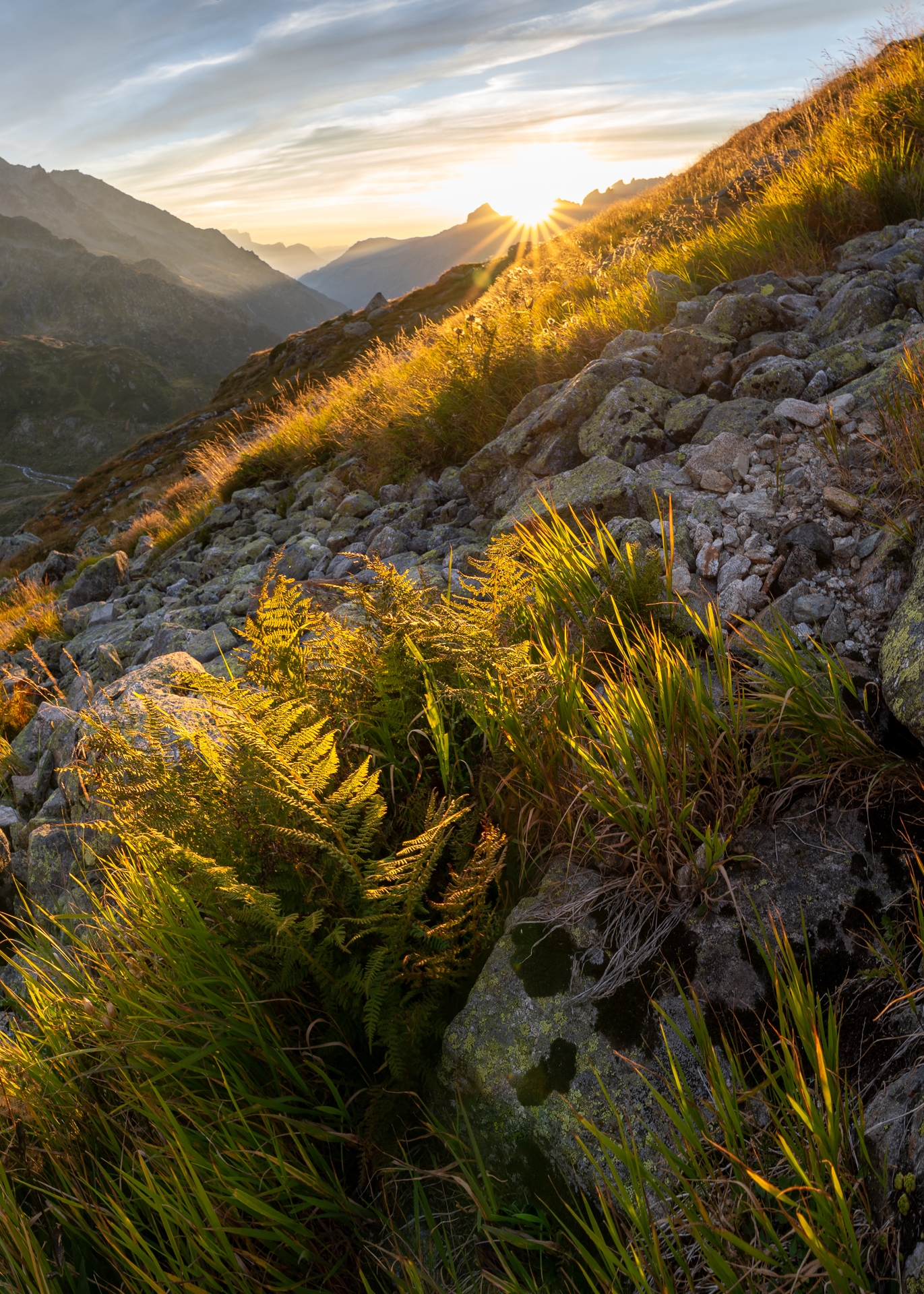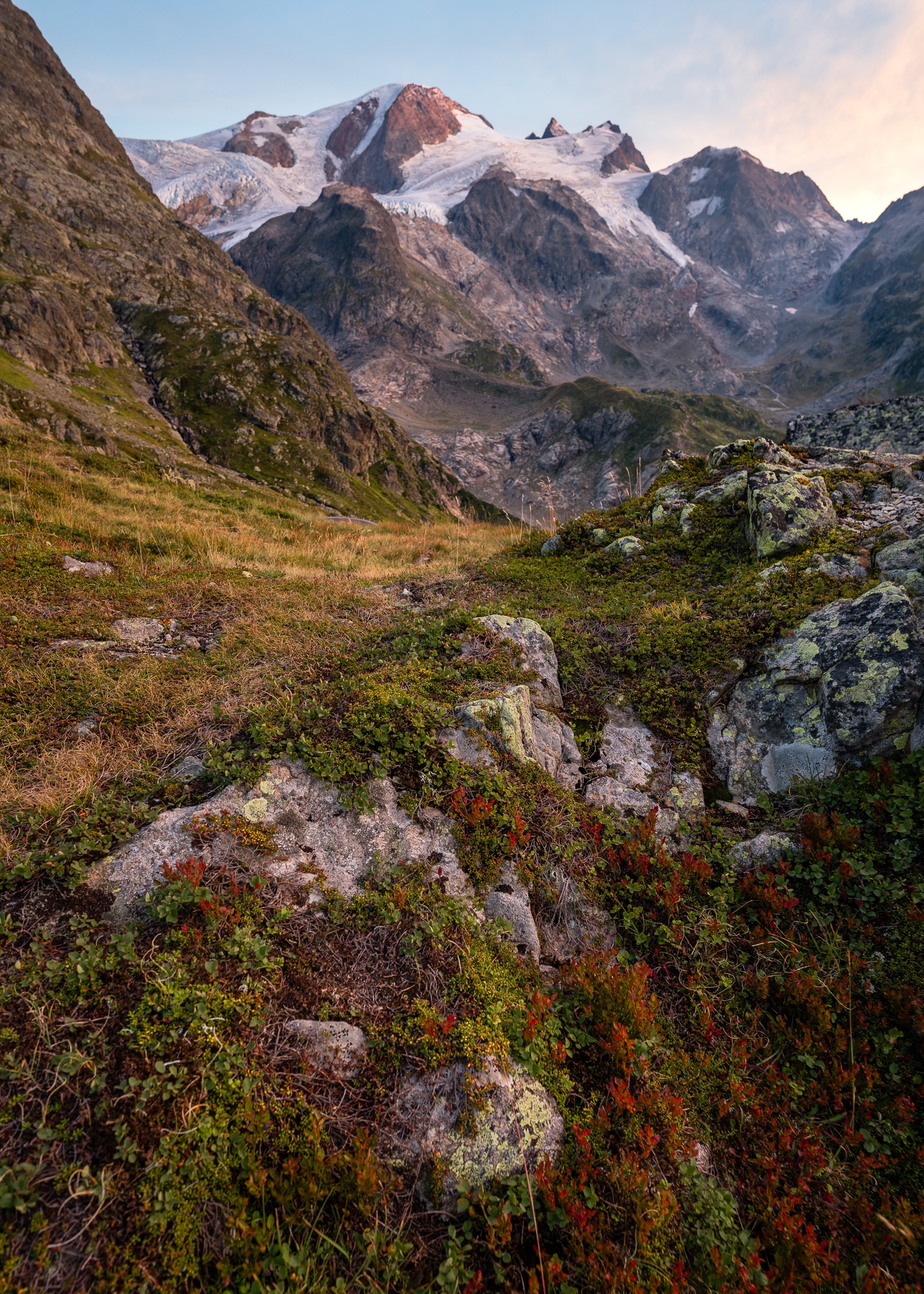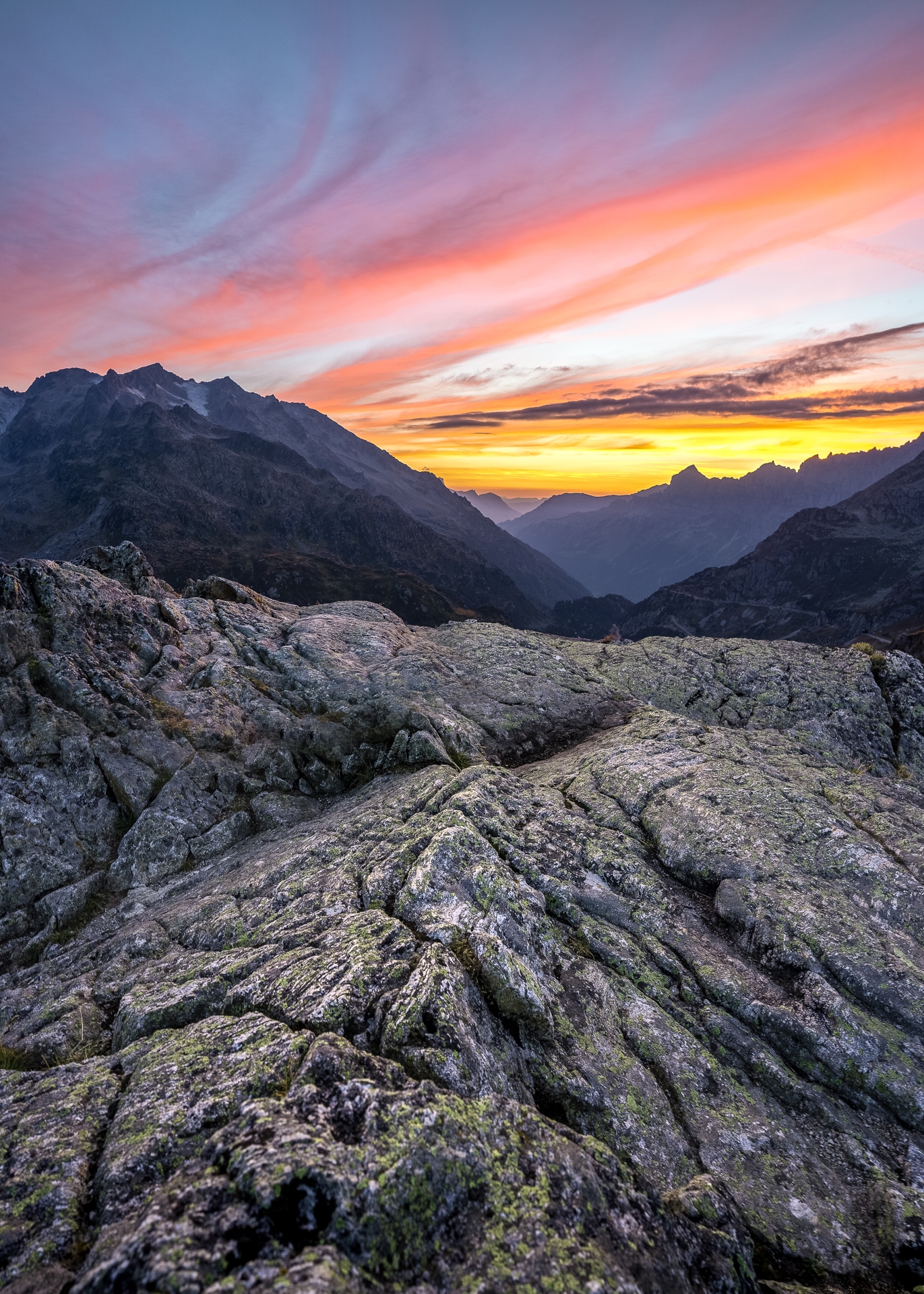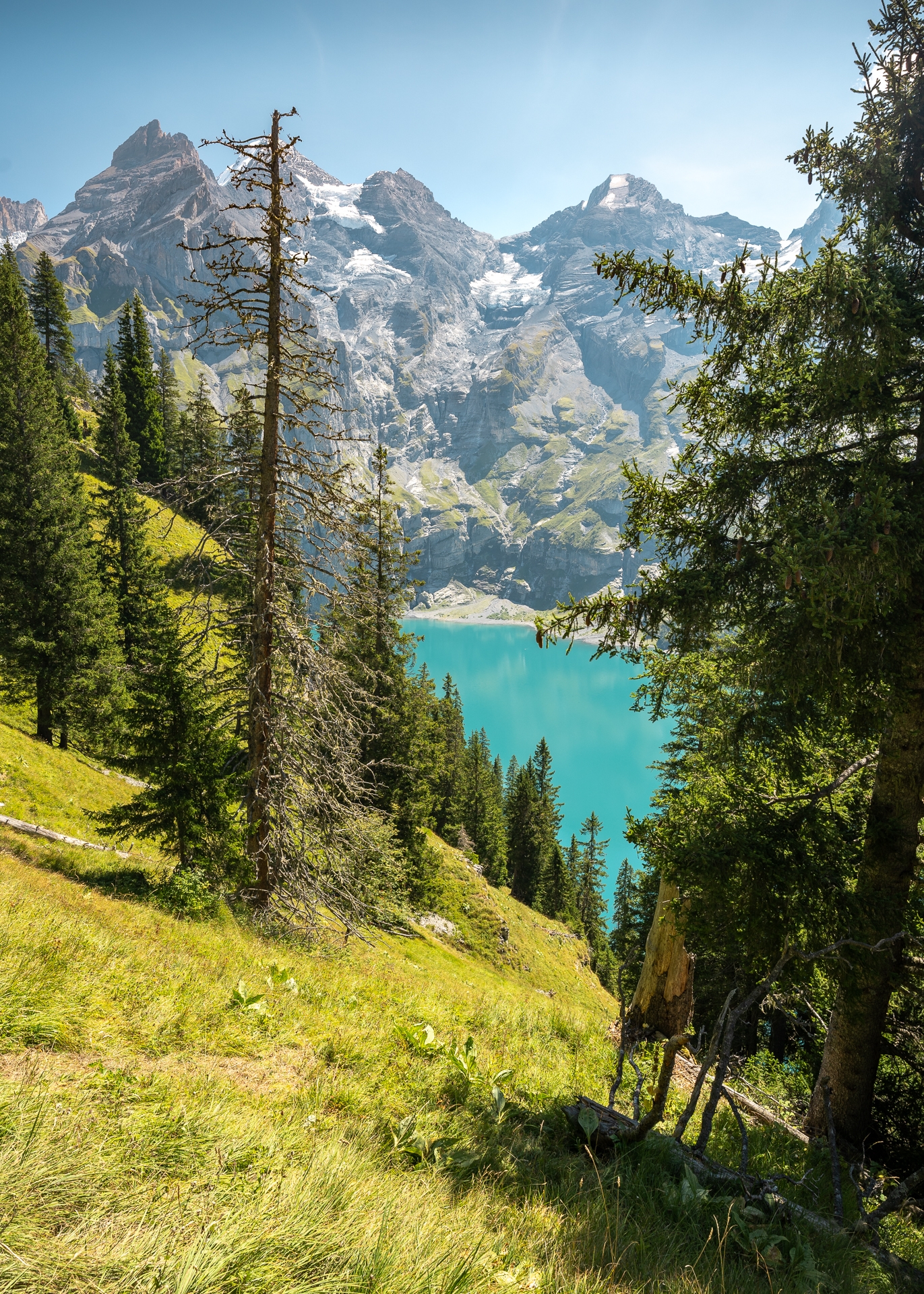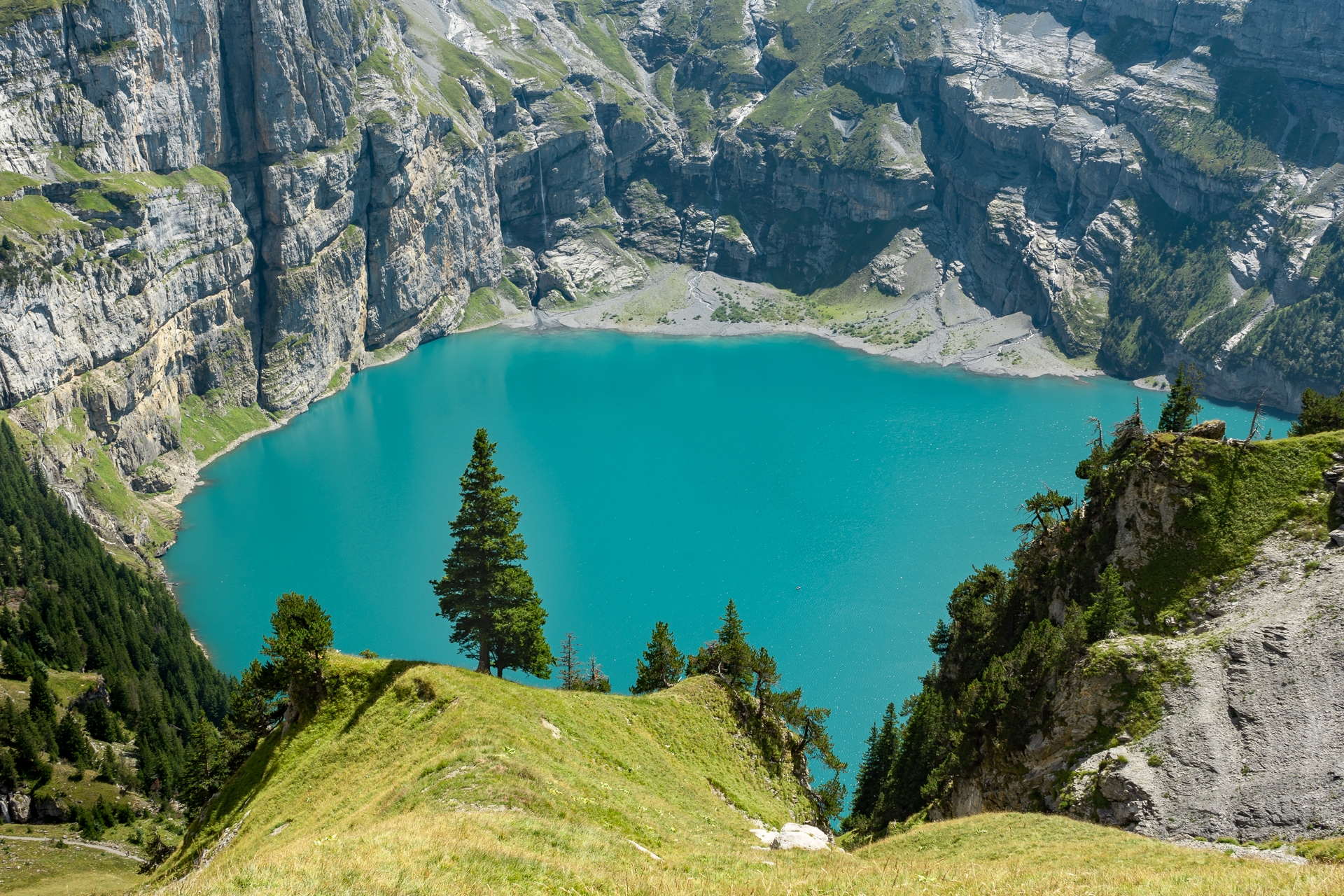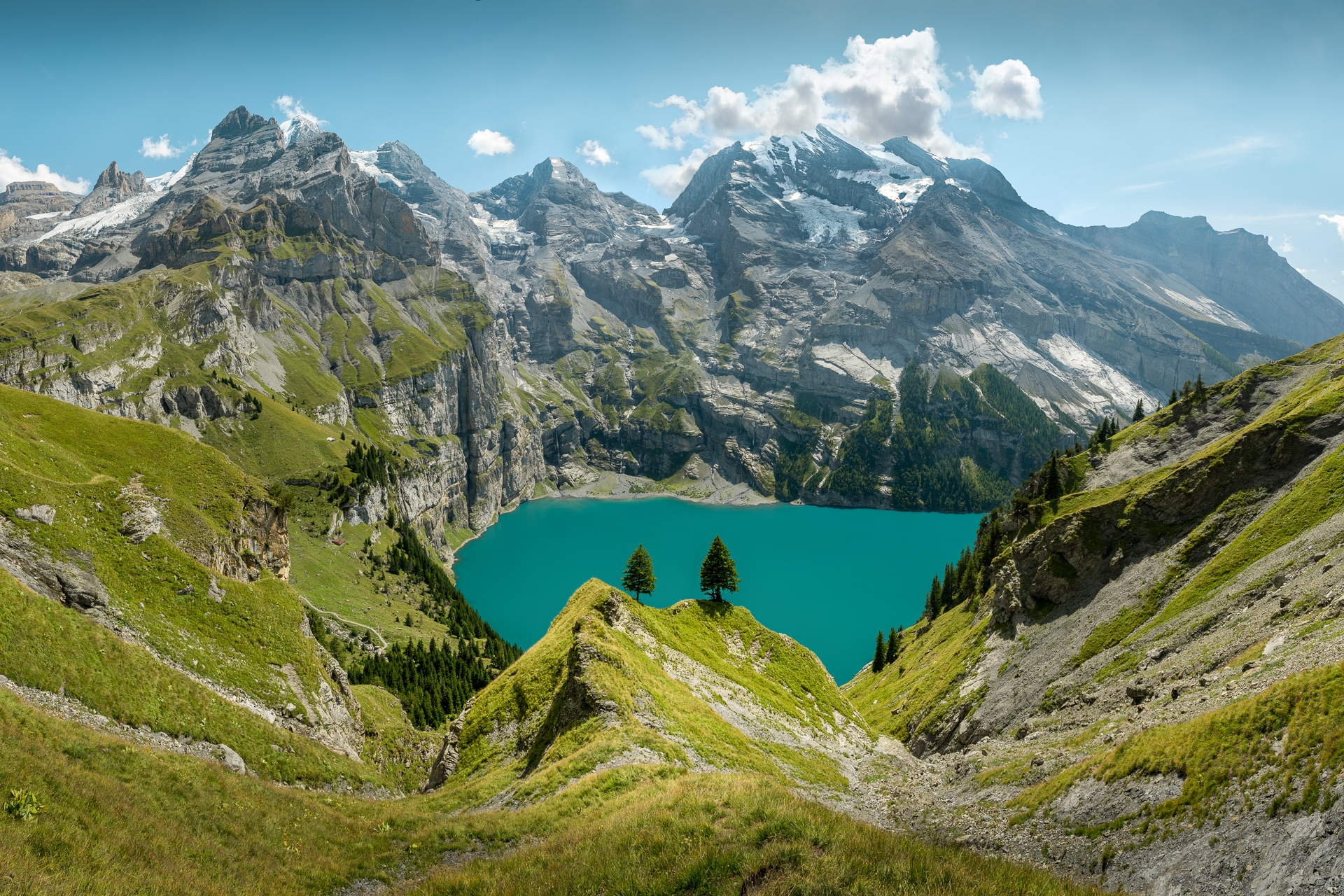I have been planning a return to Switzerland for some time now. I remember it as the country where I liked the profile of the Alps the most so far, where white peaks tower to the sky and glaciers still represent a significant part of the landscape. A land that cannot be imagined without its legendary texture and a certain grandeur. Not for nothing do I rank Switzerland in the top 3 European countries I have visited so far.
The original plan to head only to the French part of the canton of Valais didn't end up being followed too closely. Probably because other famous places offer even more enticing photographic opportunities. Especially since we time our arrival just after the first heavy rains after a dry summer, which leave a fresh dusting of snow on the highest peaks and the subsequent forecast promises good visibility. To miss the Matterhorn, for example, in such conditions would be almost unforgivable.
La Couronne Impériale
The first destination, however, is the slightly lesser known Anniviers valley. It is indeed a valley adjacent to the Mattertal and the famous Zermatt with the Matterhorn, but the impression is completely different. While tourists from all over the world flock to Zermatt, without much ambition to conquer the mountain giants, here we mostly meet French-speaking alpinists.
Rain accompanies us on the way to the Grand Mountet hut. We climb over 1200 metres above the moraine of the Zinal glacier, of which only scattered dirty remnants of ice remain in its lower part. The sun peeks out for a moment over the long passage secured by chains and reveals for the first time the lower parts of the giants above us - the Imperial Crown of Switzerland. These views made me long to come here. A vast horseshoe-shaped valley surrounded on all sides by four-thousanders and glaciers, as yet untouched by extensive cable car infrastructure. Just an honest mountain experience.
The window in the clouds lasts only a moment, we try to take a picture, but it's not good enough yet. Then more clouds start to brew in the valley, coming towards us like a huge grey rising wall of mist. We barely have time to set up our tent before the evening drizzle arrives.
For the rest of the evening, we can't see more than a few feet from the tent, the water droplets on the tent slowly freeze, and only the sounds of falling rocks and ice remind us of the presence of the high mountains above us. Every now and then a deafening crackle echoes through the absolute silence of the night, reverberating between the surrounding peaks.
Wake up an hour and a half before sunrise. Sometimes at such a moment one longs to peek out of the tent and see the fog still there, thick, dark and engulfing. So that he could still sleep and not have to deal with getting up in the cold of the still ongoing night. I unzip the tent flap with some trepidation. I know both possible situations, so many times I've peered into the fog and so many times I've been dazzled by the shimmering peaks against the fading stars of dawn. What about this time?
The sky shines with a thousand stars, the Milky Way hangs above us. It's far from dawn today. Opposite to us, the Ober Gabelhorn glistens, and somewhere to the right, the even more imposing Dent Blanche. All over the peaks, the headlamps of climbers who have long since set off flash in nonsensical places. We're going too, just not as far. I have a spot above the Grand Mountet hut from where you can see all the surrounding glaciers flowing into one big stream. The Mountet, Durand and Grand Cornier glaciers shine like apparitions in the barren rocky landscape, the highest peaks gradually reddening above them. In fact, they are already colouring up long before sunrise itself, which is just the perfect punctuation to the morning's spectacle. This is exactly how perfect I imagined the Imperial Crown to be.
Moiry
We try to fill the free afternoon with a shorter climb above the Moiry dam in a side notch of the Anniviers valley. We head for the Lac des Autannes, which promises interesting views of the Moiry glacier and the Dent Blanche peak rising above it. Perhaps it is the impromptu planning, perhaps the place itself, but it represents our biggest disappointment during this visit to Switzerland.
Then again, the surroundings of the dam itself are certainly impressive, and the colour of the water and the structure itself are breathtaking, but one cannot help feeling that the mountains here are too scarred, by the dam, by the road, by too many buildings...
Matterhorn - Swiss classic
We move to the Mattertal valley, below the most famous mountain in Switzerland and probably in the Alps. The Matterhorn is simply irresistible, like a perfect symmetrical pyramid rising above the surrounding landscape, like an unsharpened pillar. It has attracted people since time immemorial, which is why the settlement of Zermatt at its foot has grown many times over. Unfortunately, mostly monstrous hotels and infrastructure for tourists - cable cars and railways - have been added. I don't like the number and insensitivity of these encroaching on the exceptional landscape here, but in a way I understand. Fortunately, even here it is still possible to find corners almost unblemished.
We're headed for the mountain lake Stellisee. The best views of the Matterhorn can be seen from here. It may be a bit far across the valley, but its eastern and northern faces, its characteristic wedge-shaped profile, are oriented this way. The level of the lake mirrors the peak perfectly (it just needs to stay out of the wind), so it's no wonder that many photographers gather here for sunrise. There are 3 basic compositions on offer: with the grassy lake shore, with the two famous boulders rising above the water's surface or a minimalist one with just the reflection of the Matterhorn itself.
Eggishorn
We are heading to the Bernese Alps to the longest Alpine glacier run - the Aletsch Glacier. Unlike Zermatt and the Matterhorn, I have never been to this area before, and we explore the possibilities of views in the area. The whole area around the top of the Bettmerhorn is directly above the glacier, but the more distant and higher Eggishorn looks even better. The border of the protected area passes directly over the summit, so it should be no problem to spend the night somewhere nearby on the unprotected side (generally Swiss law allows bivouacking above the forest line outside protected areas).
The climb to the summit means a fairly brutal 2 vertical kilometres up, I agree to take the cable car for once. Since we arrive in the afternoon and it would still be possible to catch the sunset, this is an ideal option. We take one of the last cable cars to get to the top, which has the added benefit of keeping the crowds to a minimum.
The sun sets directly behind Aletschorn and the glacial outwash is soon swallowed by long shadows. Over the edge of the mountains, the sun's rays do refract interestingly, but overall the conditions here are not very satisfying. The summit of Eggishorn itself is a little further beyond the cable car station and is formed by a steep sea of boulders. Getting to the summit cross takes a bit of effort (yay, a walk), but the most interesting viewpoint is a little further on. Here the landscape opens up in the air - a steep precipice on three sides. Here I really have to overcome my fear of heights after a long time.
Sleeping right here seems out of the question. At the cable car station it would be possible without any problems, but in the end we decide to descend a little lower, to a plain strewn with boulders. From here, it seems that the glacier could also be seen, perhaps some of the prominent peaks in the area, and a more interesting composition could be devised than the one presented from the summit, which is presented in every information material from the area.
So we descend to the saddle below the summit. Already when we approach the place we have been looking for, I start to like the surrounding relief. There are bigger or smaller rocks everywhere, isolated boulders scattered freely in the grass and dry-rush. I eagerly climb up to a promontory a little above the road, with a view opening up towards the highest peaks of the Bernese Alps and the Aletschgletscher glacier.
Even in the evening conditions are very promising, but the sun sets directly over the highest peaks and they are drowning in shadow, while the sky above them is too bright. More interesting in the evening are the views in the opposite direction, towards the more distant and lower mountains to the south. At night I get up to surprisingly humid air, for we are at nearly 3000 metres above sea level. I snap a general panorama of mountains, with the Big Dipper shining and the Milky Way arc curving. But the sky is not entirely clear, which is certainly a pity. All the more reason to look forward to the morning, which promises to be a perfect spectacle.
The morning is absolutely fabulous. We wake up to a calm and quiet mountain backdrop, it is warm and windless. The mountains are drowning in bluish light while the last stars are fading. Only now do the views to the glacier have a balance of colour and contrast. The shutters click as we look back towards the east in anticipation of the sunrise itself. I'm still snapping a few more close-ups of the glacier with the last significant reds, so that when the sun suddenly swoops over the horizon, I'm not ready for a composition facing the sun.
No matter, a few details come out great later instead of the overall view. I particularly like the sunlit blades of grass, which when using a longer focal length create a frame of glowing circles in the foreground.
From the saddle we descend back to the village of Fiesch, first through sheep meadows, then through dense spruce forest on unmarked trails. We are really looking forward to the shade of the trees, as it is extremely hot. We wonder how much longer the largest glaciers of the Alps can last. It is possible that soon there will be no more white water running down into the valley.
Surprise in the Susten Pass
We continue along the classic Alpine route to the road passes of central Switzerland. First we cross the Furka Pass and stop at the famous viewpoint of the Rhône Glacier. This is one of the fastest receding glaciers in the Alps and you can tell. Where the glacier ended five years ago, there is now a rather large lake. The remnants of the famous glacier cave crouch beneath a white sheet designed to delay the melting of the ice. The Hotel Belvedere in the most famous backwater has long since closed. This place is losing its charm.
We continue on to the next pass, Susten Pass. I recall a vague memory from my childhood, when I used to pass through this pass. It was raining then and the highest mountains were covered under a blanket of thick grey clouds. Like an apparition, the whitish glaciers flowed out of them, within easy reach of the road. And all around, lush greenery, flowering herbs and succulent trees. So I'm curious to see what it will look like here after this dry summer.
And indeed, the landscape here is much greener than in the canton of Valais. The grass is less scorched and there are some herbs here and there. Only the glaciers today end much higher than I remembered. The white beauty is slowly disappearing.
We decide to use the pass to spend the night. In the afternoon, a veil of clouds arrives, which diffuses the light to dim, making it virtually impossible to photograph. In such conditions, the cloud cover can thicken in the evening and frustrate any attempts at photography, or the thin cloud cover can light up in unreal colours under the low angle of the incident light. The thin cloudless band to the west promises more of the latter, yet I'm skeptical until the last minute.
And then, as if at the snap of a finger, the whole situation changes, the sun sinks below the clouds and the landscape is bathed in golden light. This goes on for perhaps an hour before the sun dips below the horizon and prepares something even better. At that moment, the clouds turn pink and orange, not in muted tones, but in shades so bright that the eye is transfixed. Long after sunset, conditions are still absolutely perfect, with the sky glowing grey (something absolutely rare). Without a doubt one of the most beautiful sunsets of the year.
Oeschinensee
Finally, we head to Lake Oeschinensee, which has been very popular with photographers lately. It should be a short trip to the lake and back, where it doesn't matter so much that we miss the golden hour in the evening or morning. The lake is nestled beneath the steep slopes of high glaciated mountains and the best views are from the north. Therefore, in the morning and evening the lake is often drowned in shadow and its green-blue colour does not stand out.
Eventually, the short walk turns into a full-fledged climb, climbing traditionaly over a kilometre up to the best views. Ironically, the most besieged by tourists offer less attractive views than those directly from the exposed path leading high above the lake. The two most interesting spots are undoubtedly the two places where solitary trees contrast against the surface of the lake.
Oeschinensee looks so inviting in the daylight and I would class it as one of the rare few places that look perhaps even better in full daylight than in the morning and evening.
